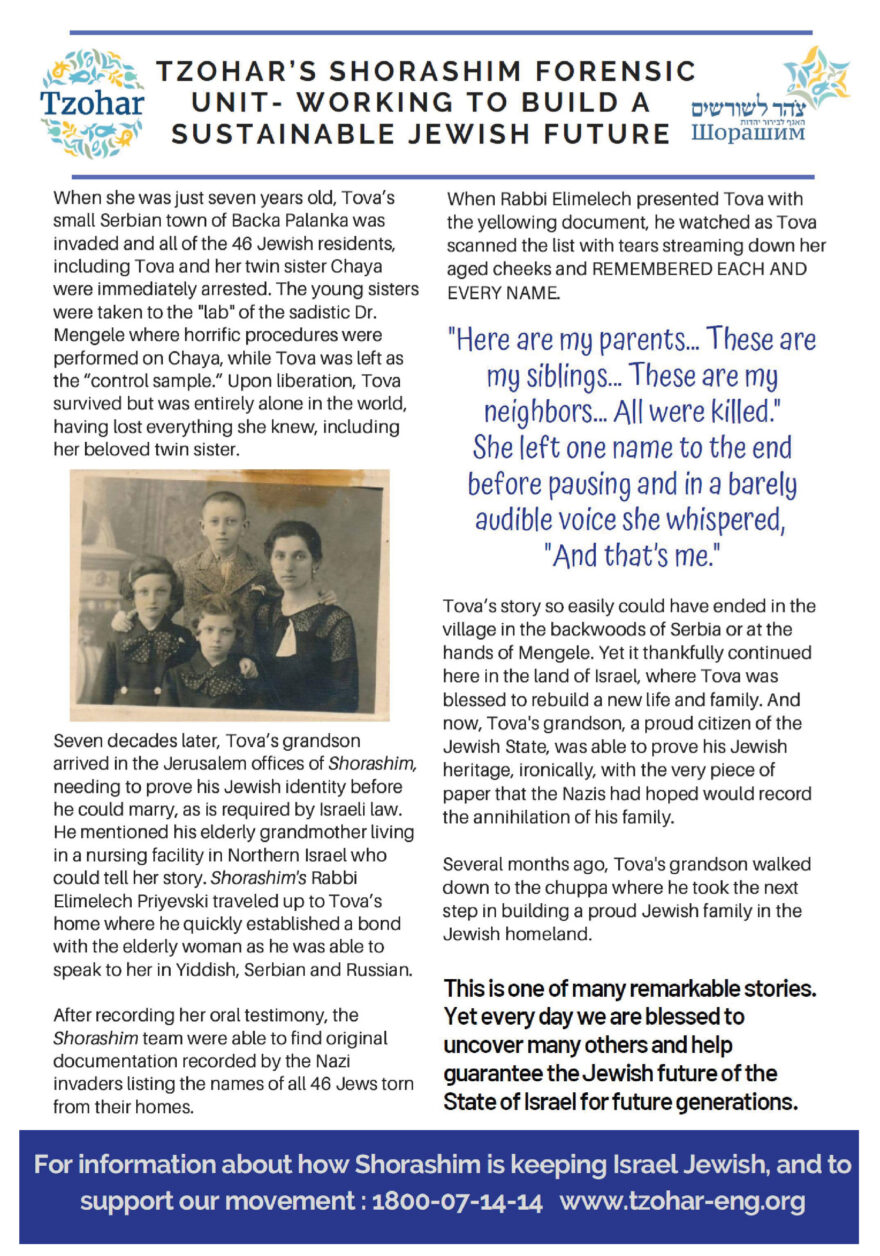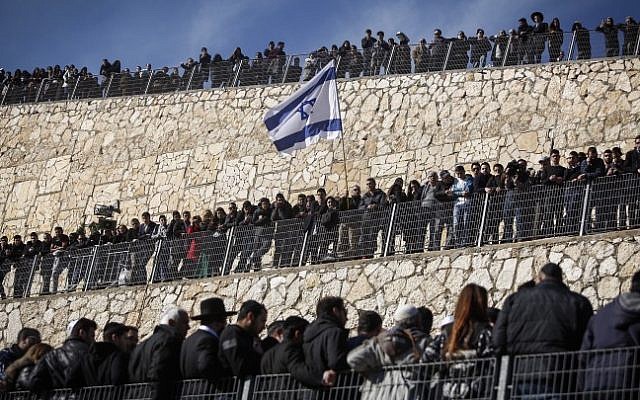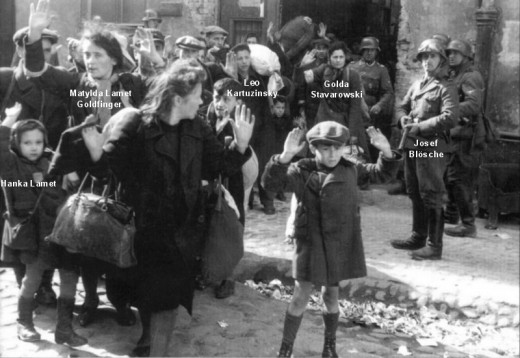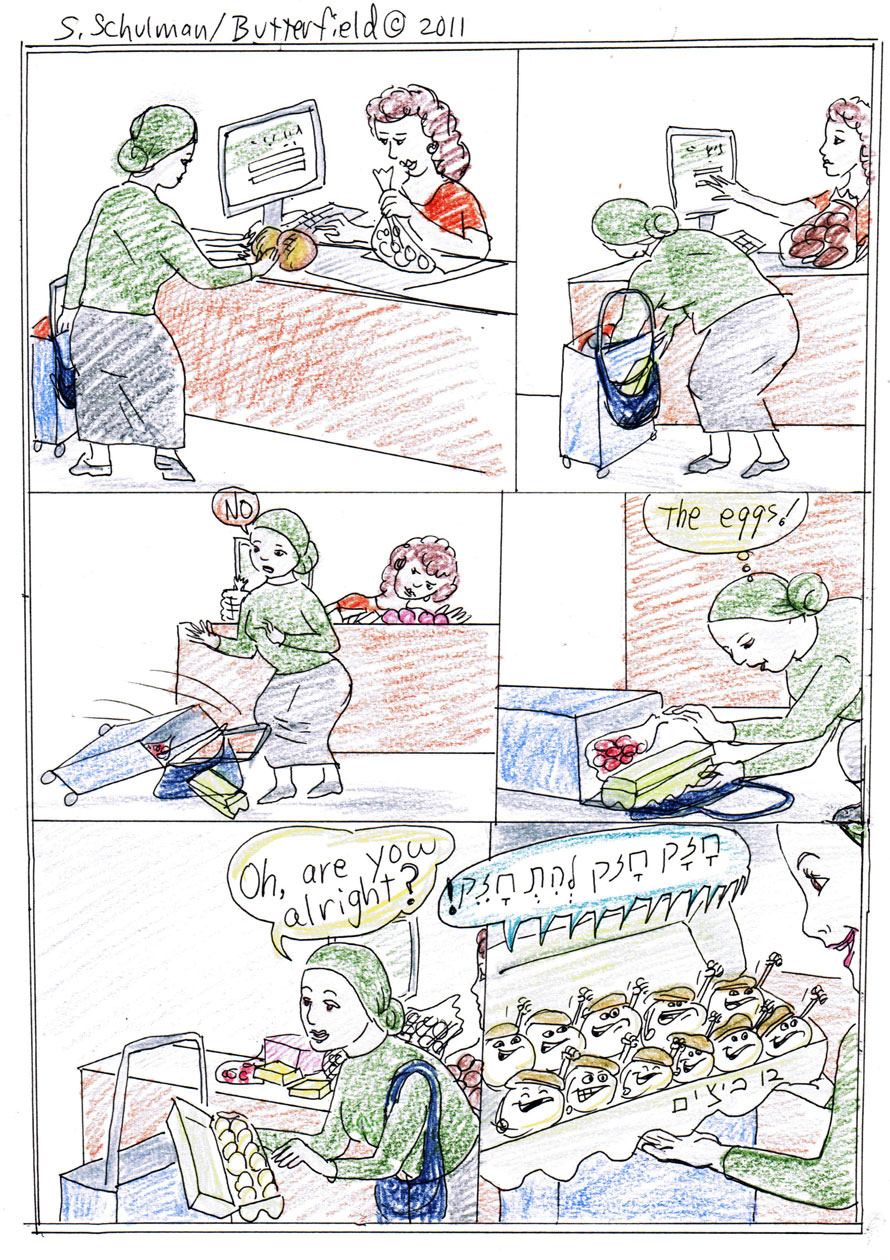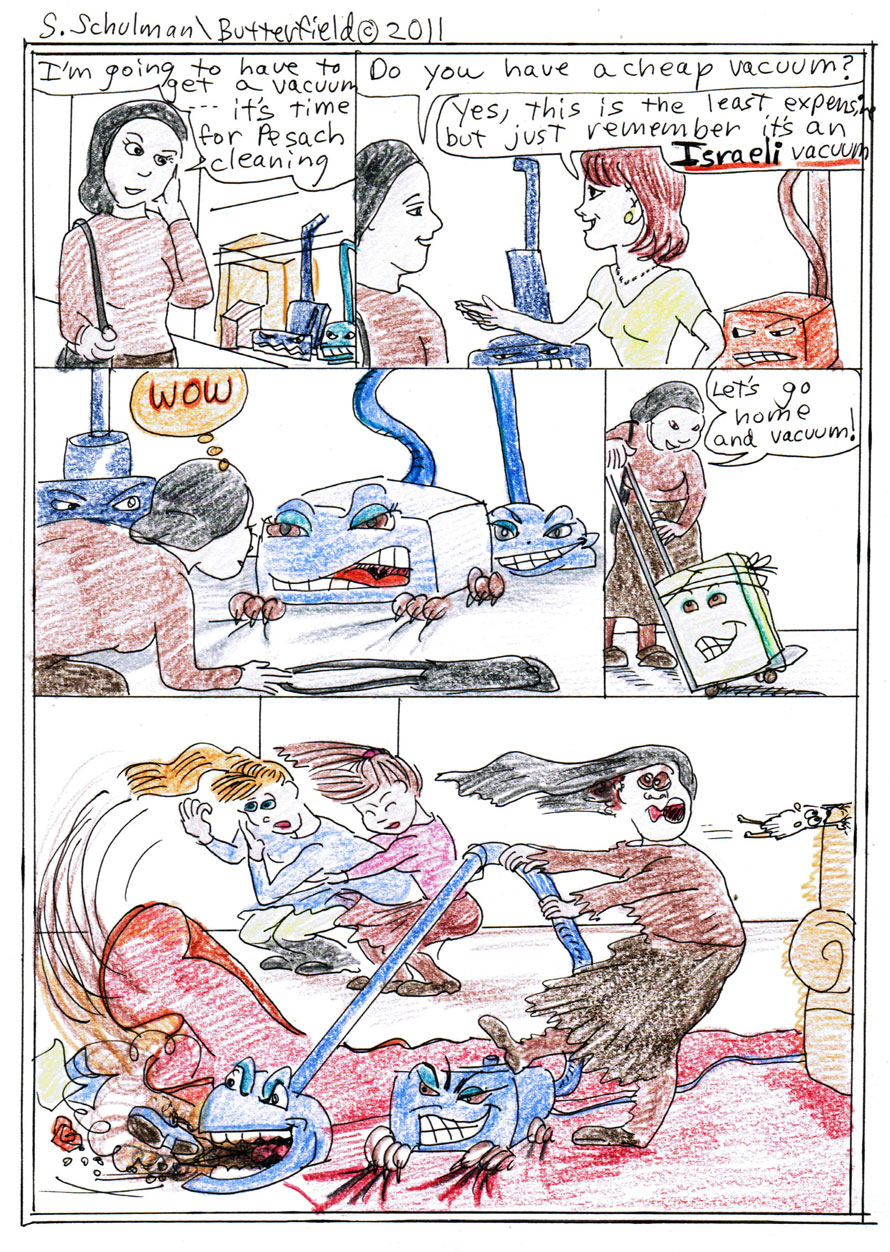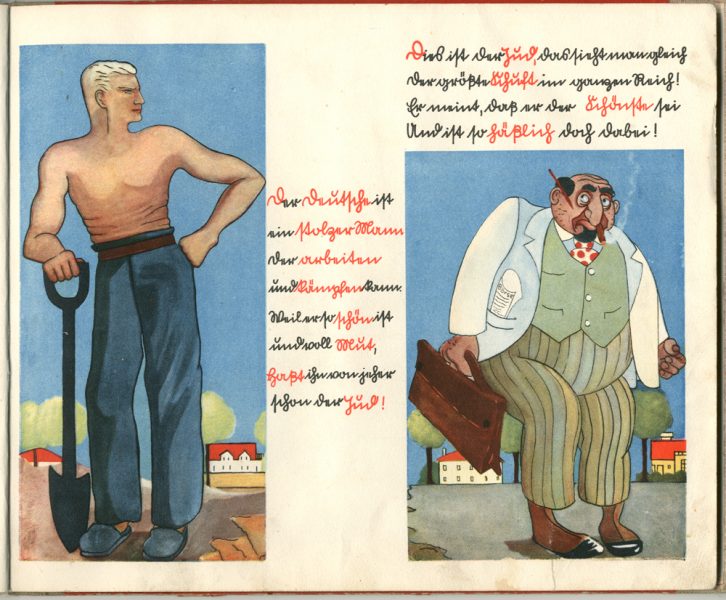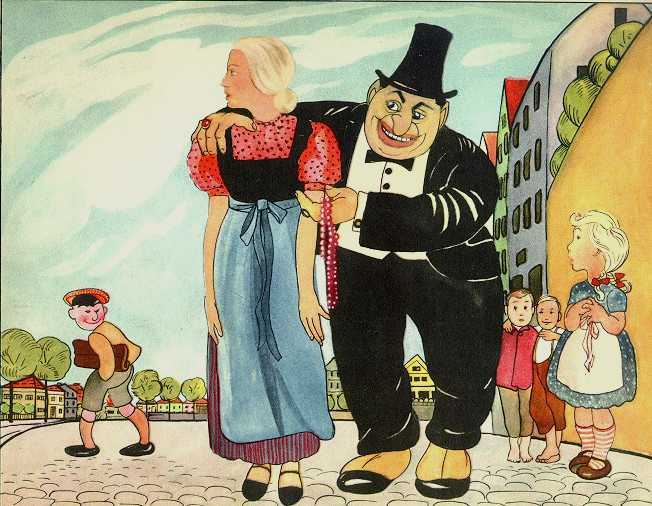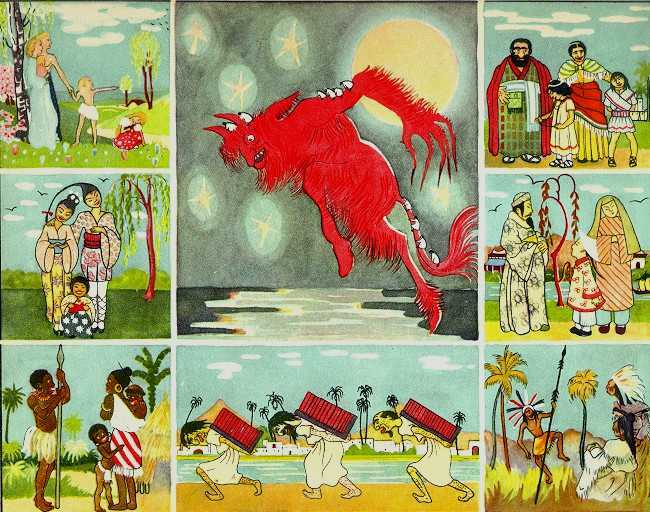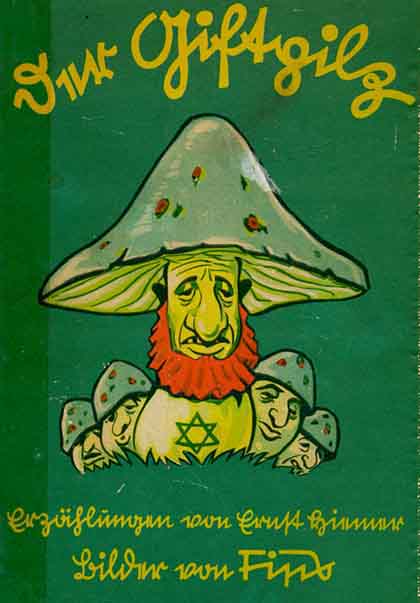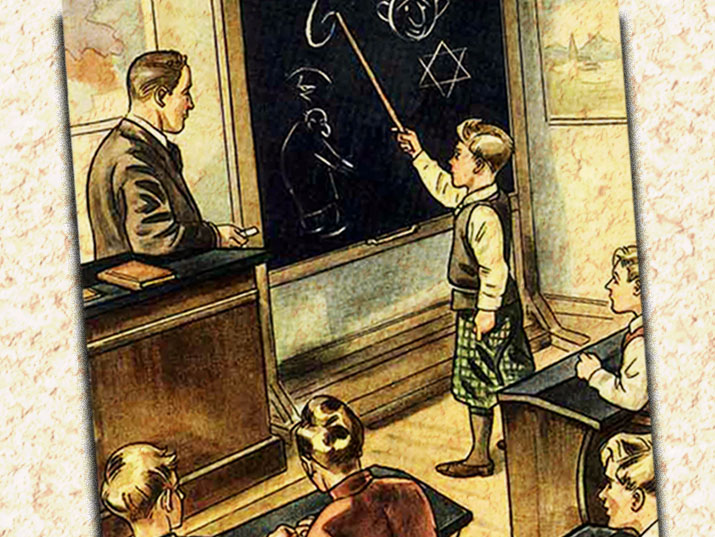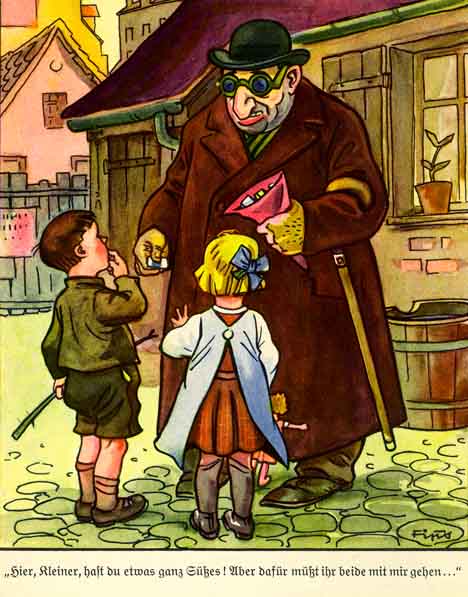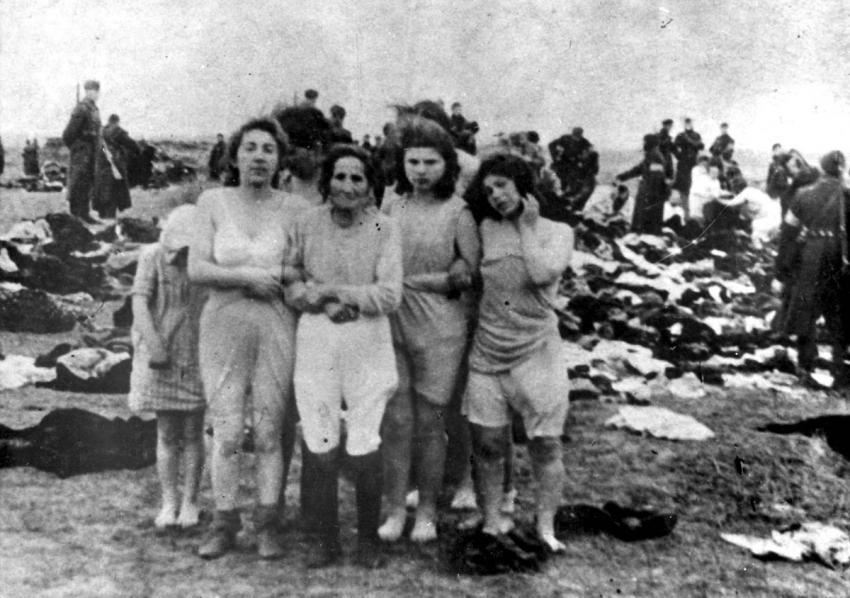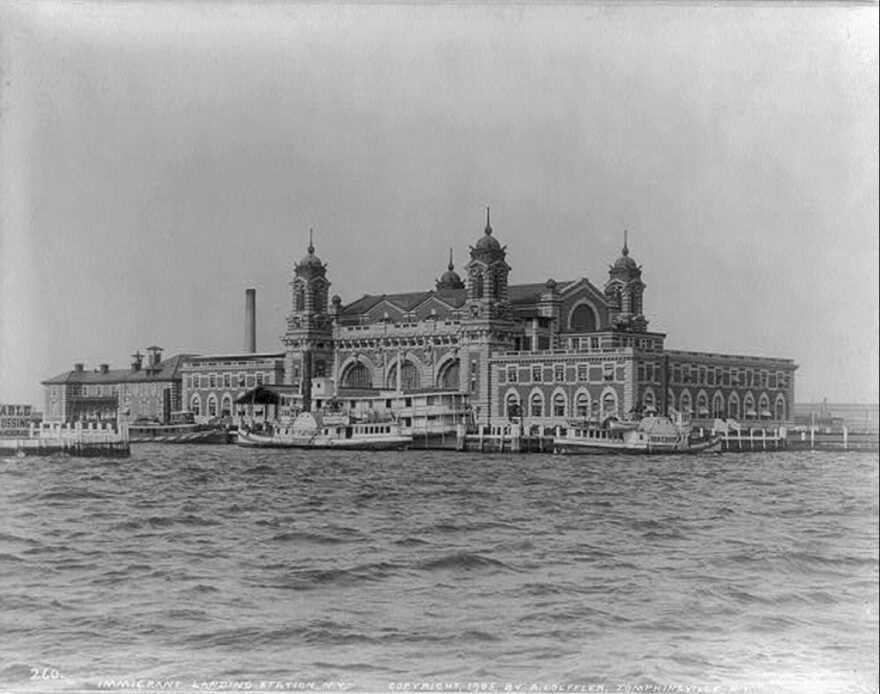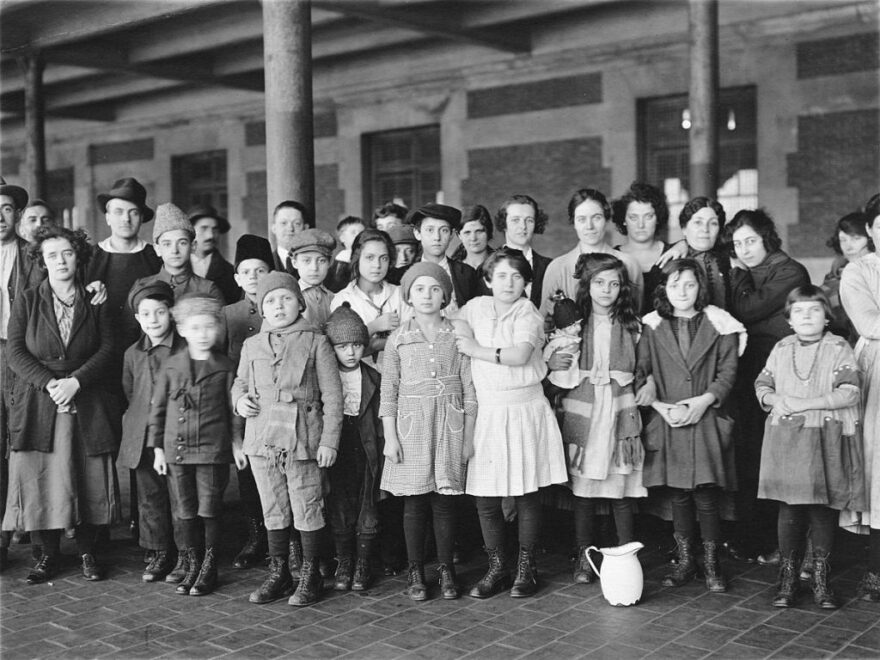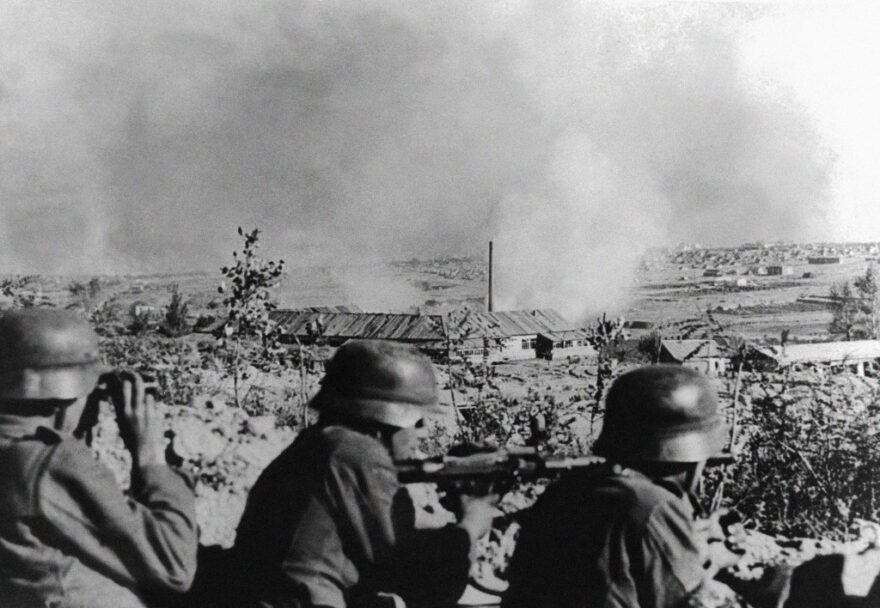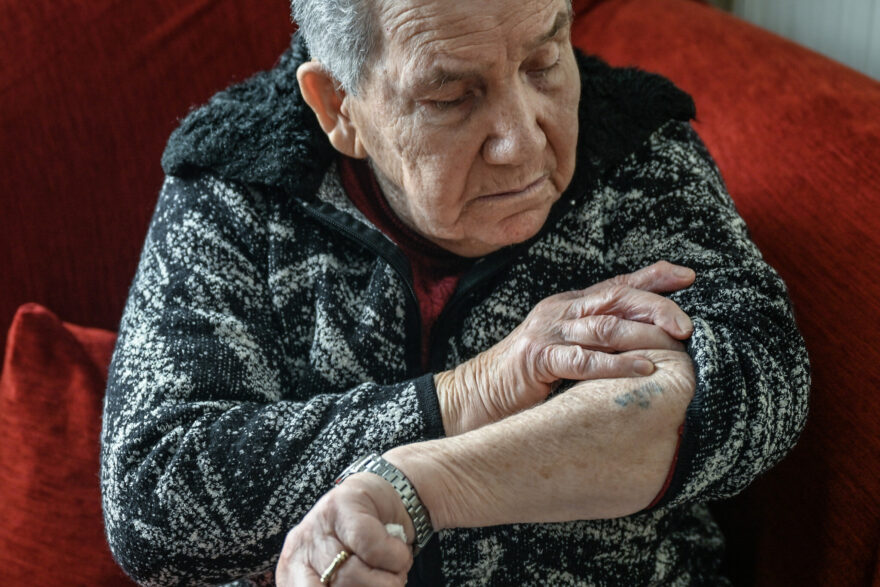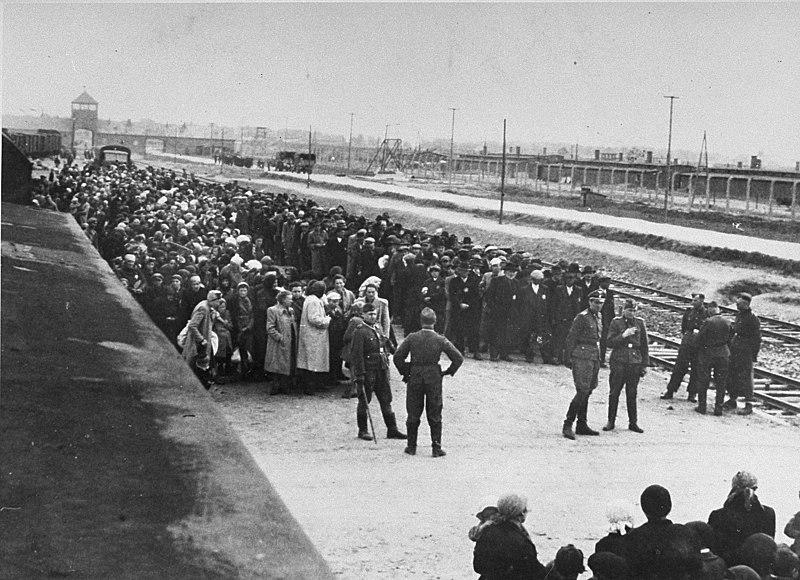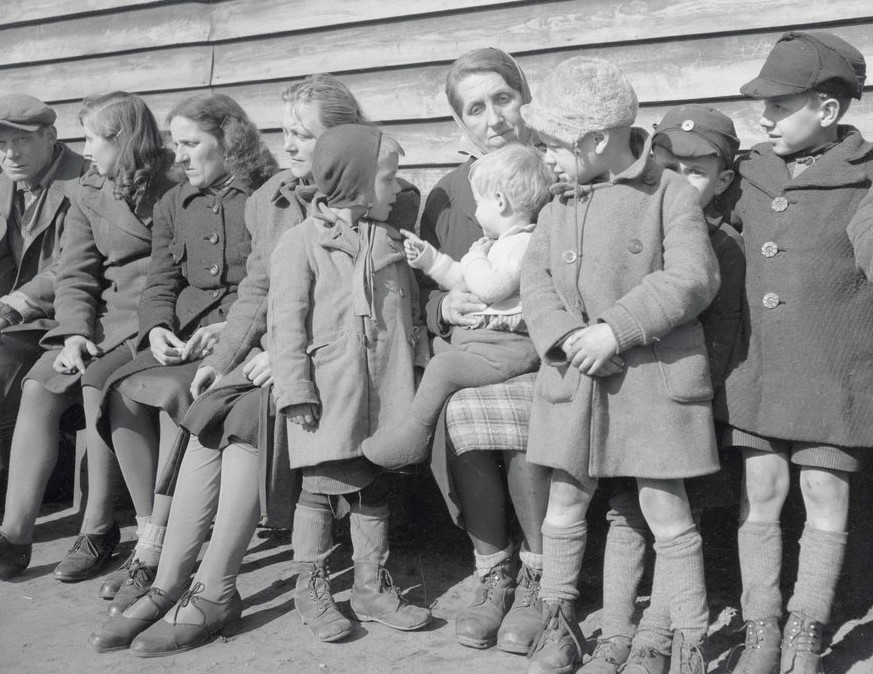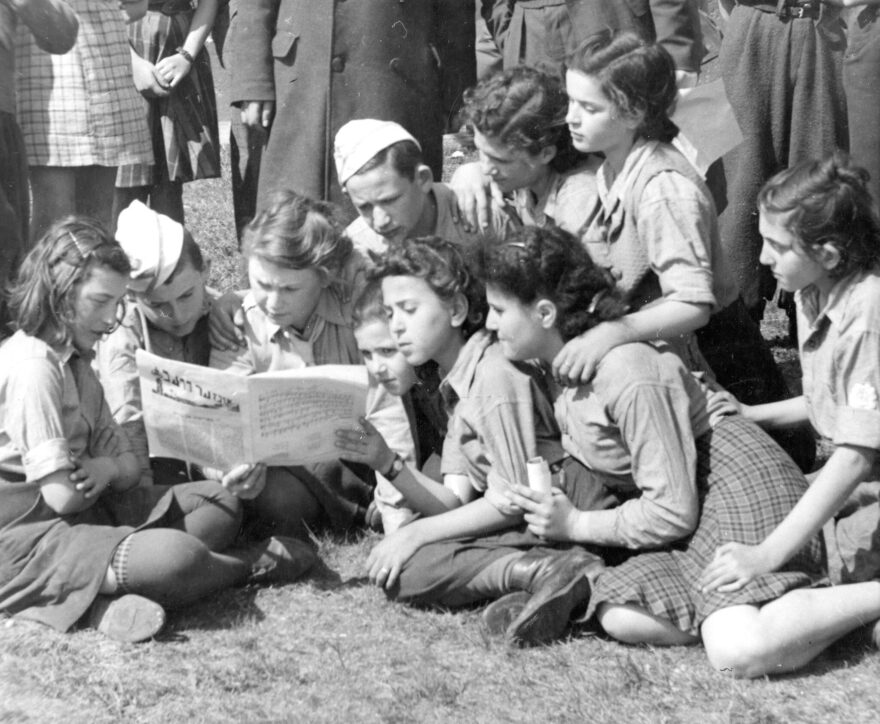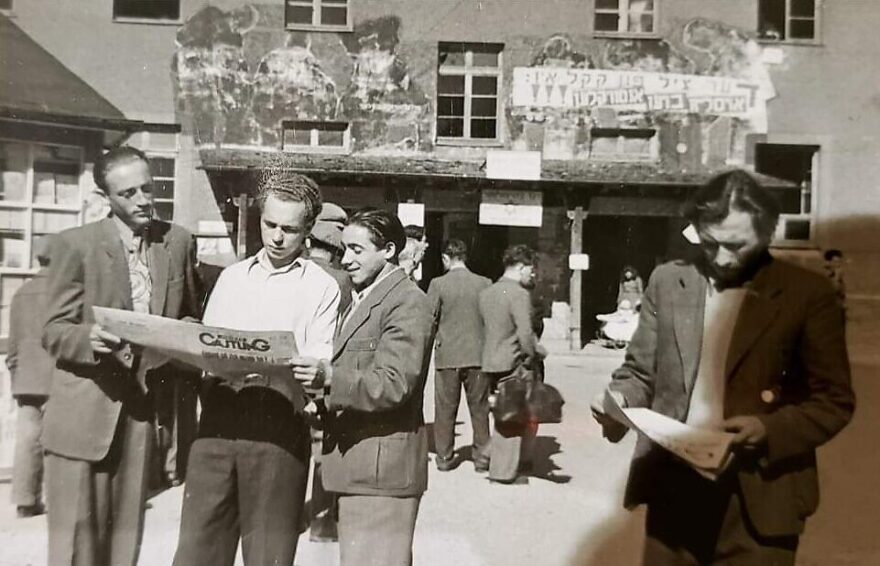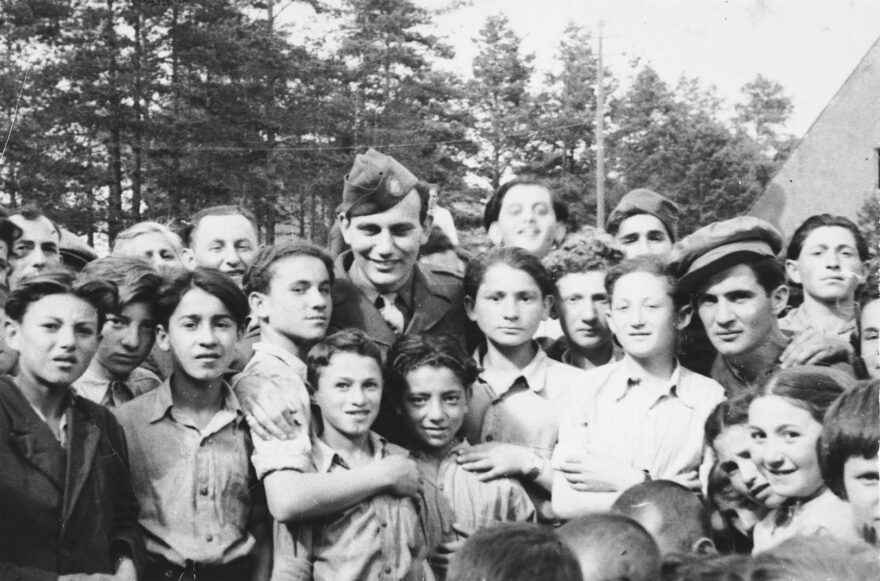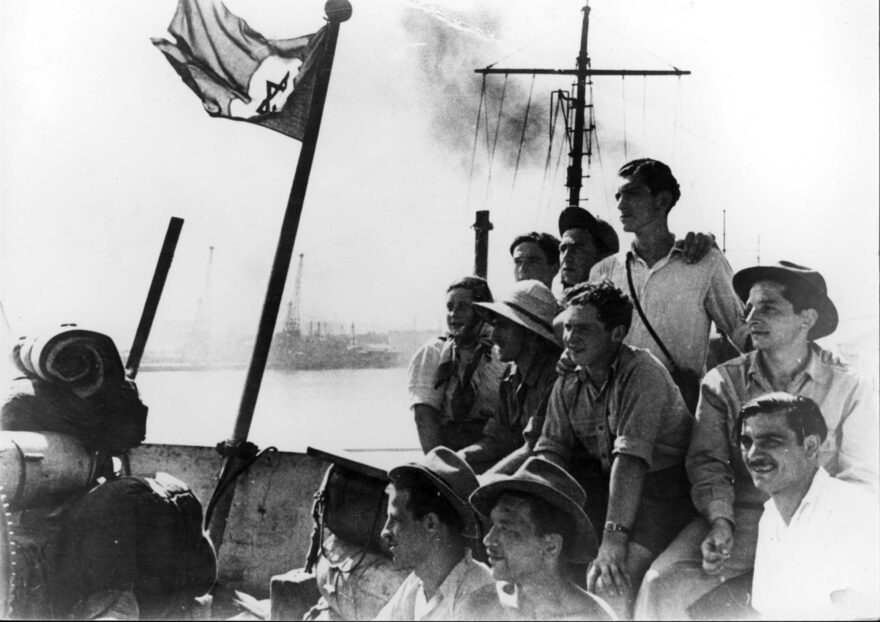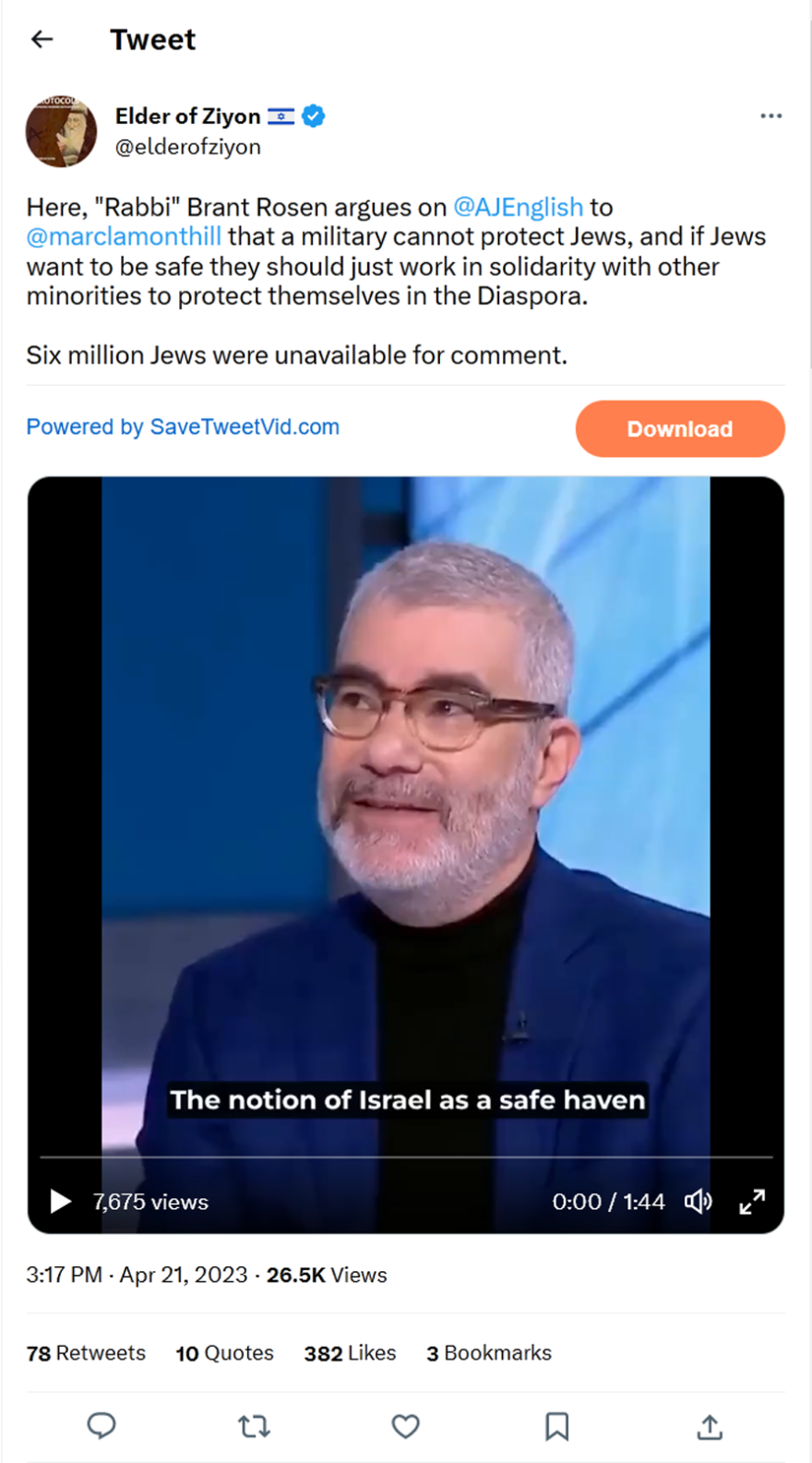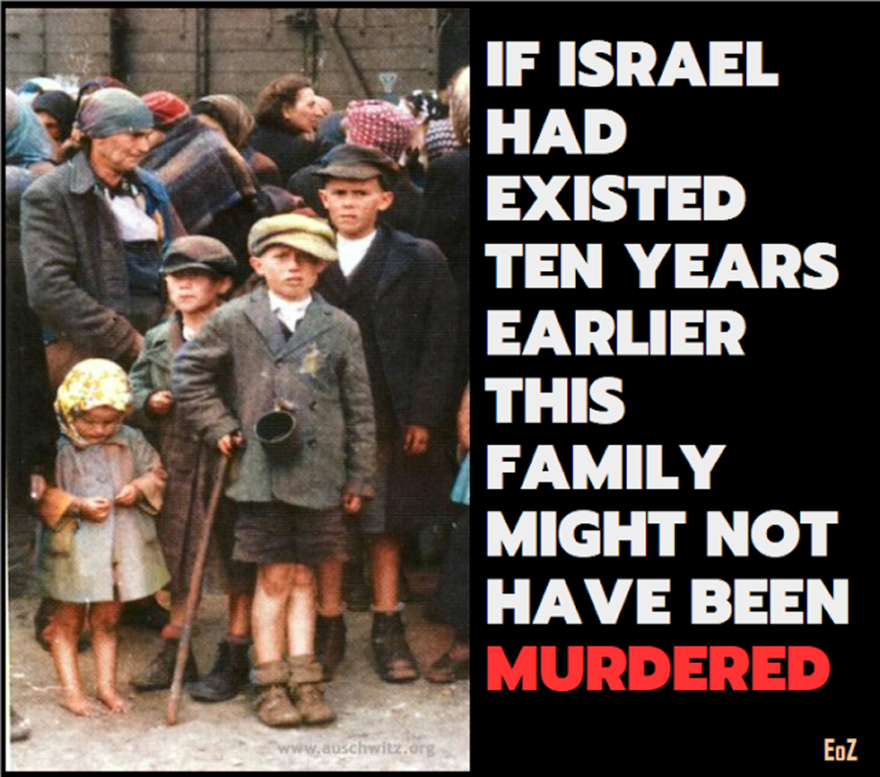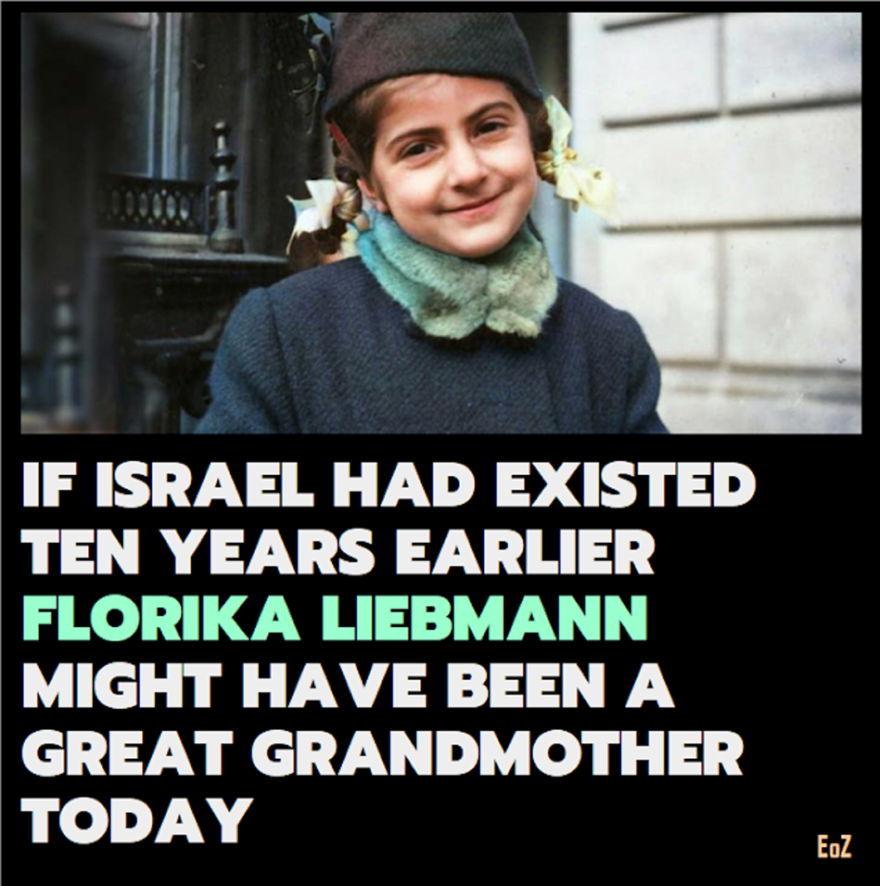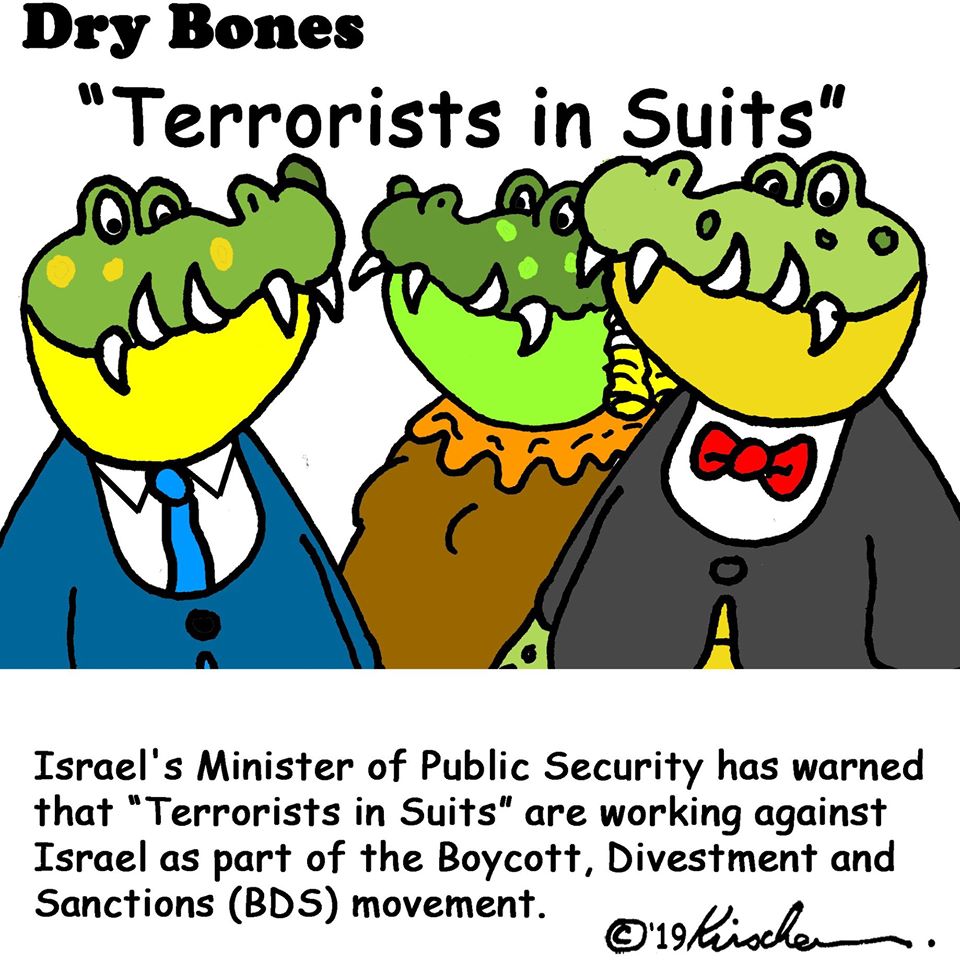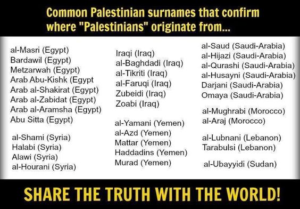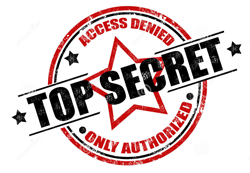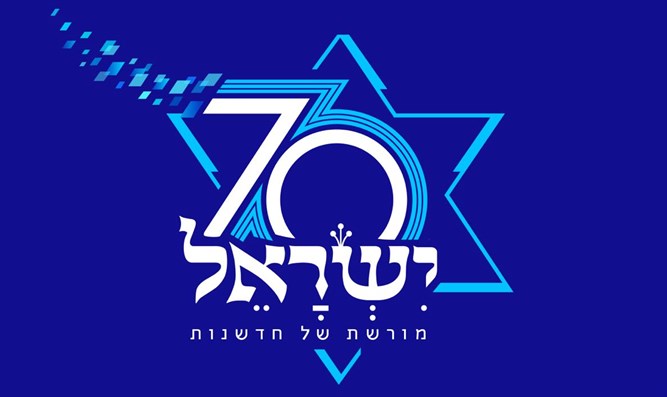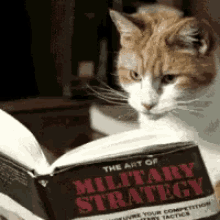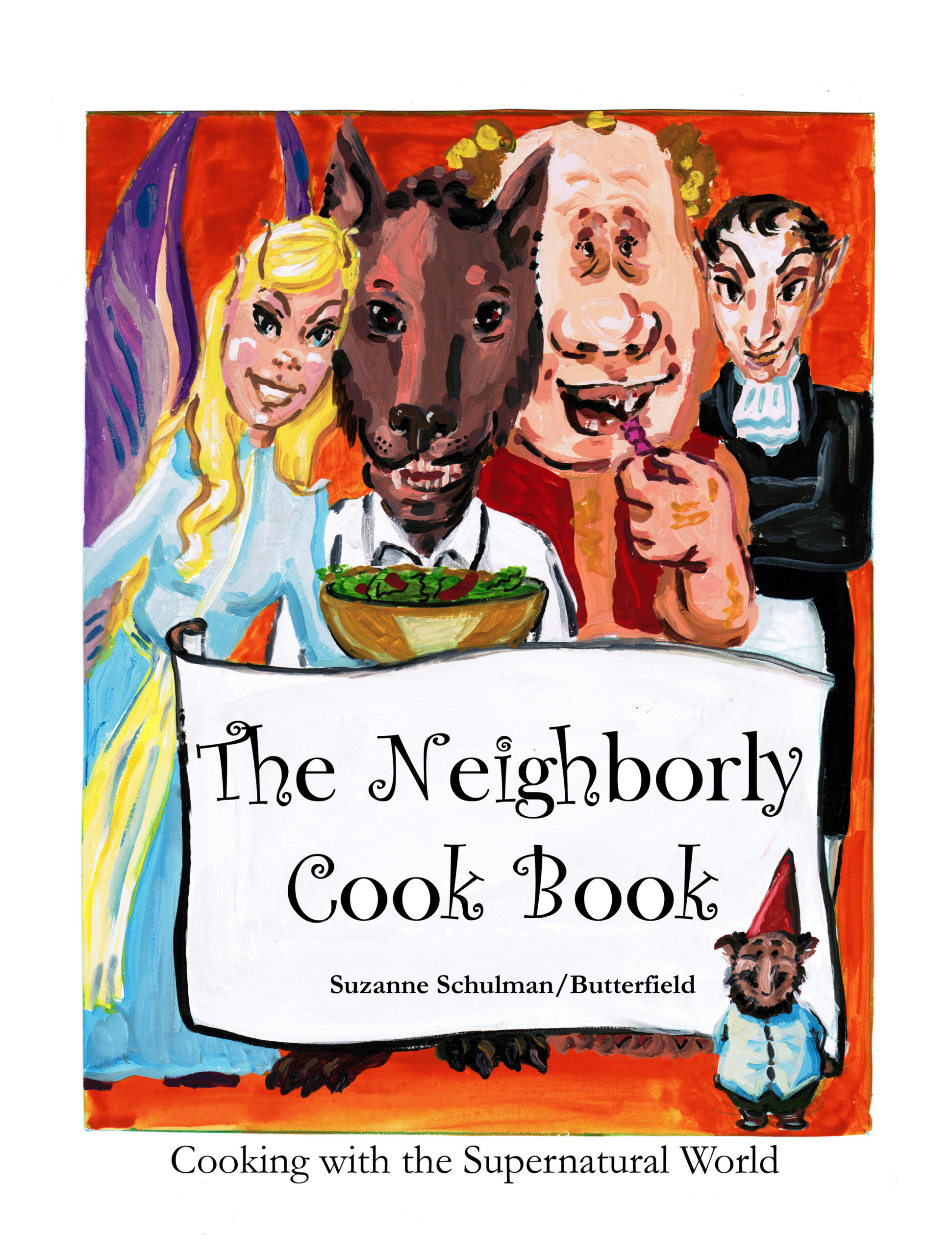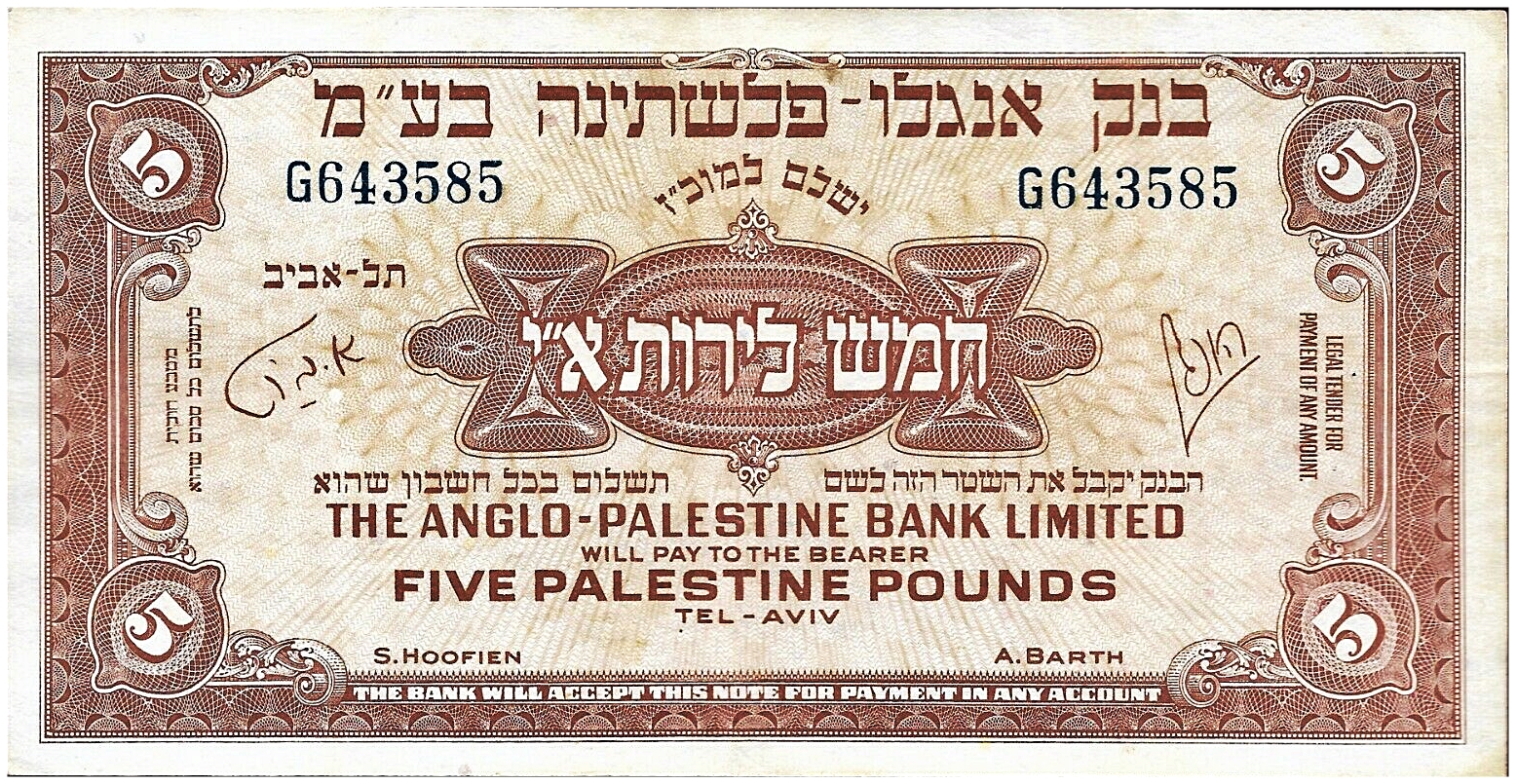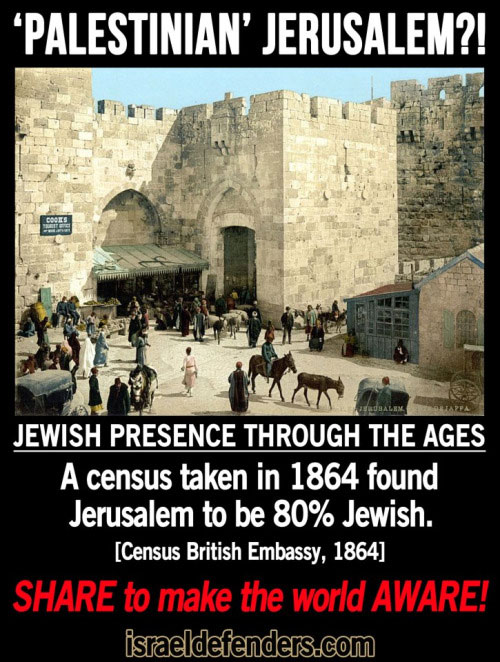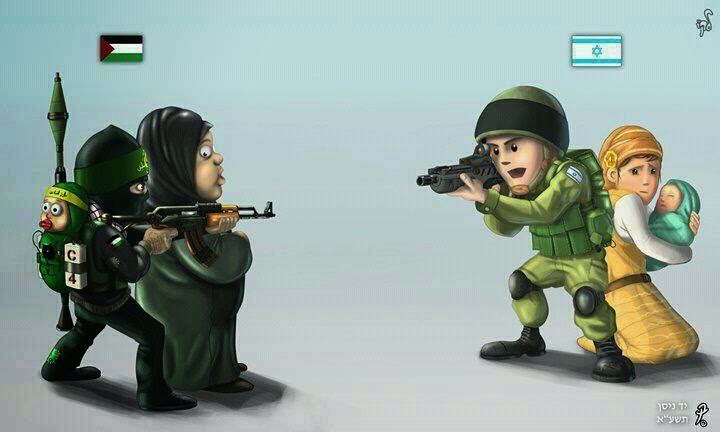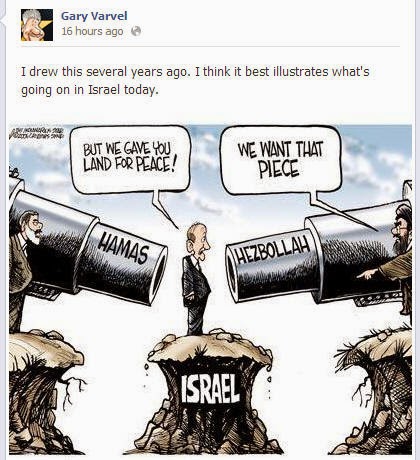|
|
National Socialist Movement rally in Madison WI 2006 |
|
SHOCKING Antisemitism: SDSU invited Nation of Islam spokesperson, Ava Muhammad |
|
shocking Antisemitism Reaction to the New Jersey Kosher Market Shooting |
|
Crossing the Line 2: The New Face of Anti-Semitism on Campus |
|
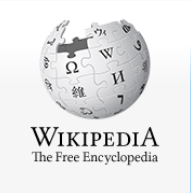
Yom HaShoah 10 AM air raid siren soundsYom HaShoahFrom Wikipedia, the free encyclopedia https://en.wikipedia.org/wiki/Yom_HaShoah Yom HaZikaron laShoah ve-laG’vurah (Hebrew: יום הזיכרון לשואה ולגבורה, lit. ‘Holocaust and Heroism Remembrance Day’), It is held on the 27th of Nisan (which falls in April or May), unless the 27th would be adjacent to the Jewish Sabbath, in which case the date is shifted by a day.[2] Evening Daytime On the eve of Yom HaShoah and the day itself, places of public entertainment are closed by law. Israeli television airs Holocaust documentaries and Holocaust-related talk shows, and low-key songs are played on the radio. Flags on public buildings are flown at half mast. At 10:00 AM, an air raid siren sounds throughout the country and Israelis are expected to observe two minutes[10] of solemn reflection. Almost everyone stops what they are doing, including motorists who stop their cars in the middle of the road, standing beside their vehicles in silence as the siren is sounded.[11] |
|
This was 70 years age in Europe. Has anything changed?Yom HaShoah |
|
The Mass Extermination of Jews in German Occupied Poland, published December 1942, ignored by the worldElder of Ziyon 20April2020 http://elderofziyon.blogspot.com/2020/04/the-mass-extermination-of-jews-in.html The Mass Extermination of Jews in German Occupied Poland was published by the Polish government-in-exile in December 1942 and sent to the foreign ministers of the 26 government signatories of the Declaration by United Nations. It was the first official document informing the Western public about the Holocaust.[ Though the document contained extensive information on the persecution and murder of Jews in Poland, its effect was limited because many people outside German-occupied Europe found it difficult to believe the Germans were systematically exterminating Jews. After meeting with Jan Karski, who had made multiple undercover trips into occupied Poland and escaped to warn the Allies, Jewish U.S. Supreme Court Justice Felix Frankfurter said he did not think Karski was lying, but that he could not believe him. Historians are divided as to why the Polish government in exile did not publicize this earlier. The most important item in the brochure is known as Raczyński’s Note, by Edward Bernard Raczyński, the foreign minister of the Polish government-in-exile. Raczyński discussed the Germans’ initial shooting executions and subsequent lethal gassings of Polish Jews. As horrible as his descriptions are, the reality was even worse. And the world stayed silent. |
|
My Grandfather Survived The Holocaust and This is His Story.Israel Defense Forces 27January2020 |
|
Reb Shlomo Carlebach -The Last Seder In The Warsaw Ghetto– שלמה קארליבאך20 April 2011 http://lazerbrody.typepad.com/lazer_beams/2011/04/reb-shlomo-carlebach-the-last-seder-in-the-warsaw-ghetto.html Reb Shlomo Carlebach -The Last Seder In The Warsaw Ghetto- שלמה קארליבאךRemember that our return to Hashem in the holy Land of Israel is the only guarantee that there’ll never again be a Warsaw Ghetto. Let’s hope that this coming Pesach will be the real freedom holiday for our people Israel, once and for all coming home to the Land of Israel and the rebuilt united Jerusalem, amen. Shema Yisrael: Yaacov Shwekey15September2013 http://lazerbrody.typepad.com/lazer_beams/2013/09/shema-yisrael-yaacov-shwekey.html My dear and esteemed friend Yaacov Shwekey sings a moving rendition of the above story in “Shema Yisroel”. In answer to all the Holocaust deniers, here is Yaacov singing with the backdrop of photos and film clips from the Holocaust. If you want to know why we need unshakable emuna and our uncompromising presence in our holy Land of Israel, see this (don’t be discouraged by the first 60 seconds which tells the story of Rabbi Kahaneman in Hebrew). This is a must see: קליפ מרגש עד דמעות שוואקי שמע ישראל Shema Israel yaakov shwekey |
|
Where was Hashem, the protector of Israel, during the Holocaust?The Holocaust OperationHolocaust Remembrance Day is 18-April. It’s so difficult to see suffering! How can we look “through it” to see the greater good that will be born from it?Kalever Rebbe Posted on 30January2023 https://breslev.com/3906980/
Elokim spoke to Moshe, and He said to him, “I am the Havayah (the Lord).” (Shemot 6:5) Pain with PurposeOver the years, while traveling throughout the world, meeting with Jews from diverse backgrounds, many secular Jews would commonly ask me: “Where was Hashem, the protector of Israel, during the Holocaust?”
I would answer this question with an analogy: A father had one child, a son, that was born later in his life. He cherished his only child and loved him dearly. When the boy was young, tragedy struck, and he became severely ill with a life-threatening disease. Seeking a cure, the father brought his son to a specialist who recommended a surgery that, while excruciating and painful, would cure the boy.
Obviously, the loving father agreed. However, his son was too young to truly appreciate the gravity of the situation. And, as the doctor proceeded with the surgery, the son cried out in agonizing anguish to his father to stop the surgery. When his father remained stoic and allowed the doctor to continue, the son thought his father had abandoned him.
However, when the boy grew up, he understood that that surgery saved his life and the pain he had to experience was for his ultimate good.
The lesson is clear. Hashem, the Creator of everything in the world, selected the Jewish people as His only child. And Hashem loves and cherishes every Jew, and He only showers goodness and kindness on the Jewish people. However, like the father in the analogy, there are times when Hashem knows that it is necessary for a Jew to endure a challenge or to suffer for a finite amount of time on this world, to merit ultimate and eternal goodness for their soul.
However, like the child, that person doesn’t always understand how that pain is saving his life and paving the way to an outcome that is only and fully good. They falsely feel like Hashem has abandoned them. And, they start to believe that this pain is without purpose, that their suffering is not Hashgacha Pratit, Divine Providence.
Millions of precious Jews were murdered during the Holocaust. It is understandable that someone might begin to forget that suffering in this world is for an ultimate good; that the pain has a purpose. However, when a person comes to the Upper Worlds, he will be able to clearly see that everything that had happened in this world, in his life, was only for the ultimate good. The pain was the path to the cure. Rescued Through an IllnessIn fact, we clearly saw Hashgacha Pratit throughout the Holocaust. There are countless miraculous stories of yidden being saved within those darkest moments of human suffering. And many of the survivors who suffered in the days of the Holocaust, managed to see how their suffering was an Hashgacha Pratit to save their lives. Through the temporary suffering they were able to live long and sweet lives, and merited to see their families and communities rebuilt and thrive.
Let me share one example of my own life. I was born before the war in Mihalyfalva, Hungary. When I was a child, my holy father ztz”l had developed an illness that required specific medical attention and care that was simply not available in our town. Therefore, he would travel to the Romanian town of Arad where there were doctors who could treat him. He traveled so often, that eventually our family had made the difficult decision to relocate to Arad. During the Holocaust, when the Germans occupied Hungary, the entire town of Mihalyfalva, every single Jew, was sent to Auschwitz. The illness led our family to moving, which, in the end, saved our lives. The Stolen BreadWe can see a similar example in the following story: A Jew was in one of the concentration camps towards the end of the war. Food was even more scarce than usual, and he hadn’t eaten for some time. One day, the Nazis were handing out small parcels of bread, barely larger than crumbs. But, in that state of hunger, the Jew eagerly accepted his portion. But then a non-Jewish prisoner stole his small piece of bread.
He was devastated and angry. He furiously screamed, “Hashem, why would You do something so cruel to me!?” His anger was so overpowering, and his body was so frail from starvation, that he fainted from sheer exhaustion.
When he regained consciousness, there was an eerie silence throughout the camp. There was not a sound. Just stillness. Confused, he went looking around to see where everyone had gone. He quickly learned that the allied forces were rapidly approaching and would be liberating the camp. Before the Nazis fled, they poisoned all the prisoners with the bread they had handed out. This Jew was the sole remaining survivor.
When the bread was stolen, he was angry and thought that Hashem was being cruel. He only saw the momentary suffering. However, in retrospect, he was able to realize that his bread being stolen saved his life. The source of that pain itself was salvation. Only GoodnessReb Shmuel Eliyahu from Madzitz ztz”l once shared with me the following incredibly inspiring and powerful Devar Torah that can uplift someone facing the most difficult challenges:
Suffering and tragedies come from the heavens in two different ways. For the non-Jews, they are punished for their behavior. However, when suffering and hardships are sent into a Jew’s life, they come from a place of love. The Jew’s suffering is solely for the goodness that will inevitably come after. It is truly an act of Hashem’s love. We can see this very concept from the pasuk that says (Shemot 15:26), all the sicknesses that I have visited upon Egypt I will not visit upon you, for I, the Lord (Havayah), heal you. This pasuk can be understood as follows:
The plagues were all the sicknesses that Hashem vengefully inflicted upon the Egyptians. This type of pain, I will not visit upon you. Rather, Hashem always interacts mercifully with the Jews for their “healing” and for their goodness. [Each name of Hashem reflects a different character trait or attribute. The name used at the end of this pasuk, Havayah, is the Name that expresses Hashem’s Mercy. for I, the Lord (Havayah), heal you: meaning that Hashem always interacts with the Jews with Havayah and mercy for the sake of healing them.] Therefore, when we see a Jew suffering, you need to know that that suffering itself is the catalyst for the healing; the pain is the cure because it purifies the soul from sins etc. Why “Woe”?!The Yerushalmi taught (Shekalim 23b) that ‘Nachum Ish Gam Zoo’ became very ill, and his entire body was covered with painful boils. R’ Akiva came to visit him and said, “Woe to me that I have to see you like this. Nachum rebuked him saying, “Why are you kicking my suffering?” Why was Nachum upset?
R’ Yitzchak Isaac of Kamarno, zt”l, explained that when Nachum heard R’ Akiva say “Woe” he interpreted that as revealing that R’ Akiva only saw the suffering and pain for its face value. He didn’t see that through this illness R’ Nachum could only obtain greater goodness and blessings in his life. Nachum felt that all suffering and pain will eventually lead to a greater good, that Hashem only desires goodness for the Jews and, therefore, the suffering must be accepted with love.
The early philosophers mistakenly espoused that there were two dominions in this world, God Forbid. One that delivered good things into the world, and one that inflicted pain and suffering. They thought that it was impossible for mercy itself to do something that seemed terrible or evil. Moshe Rabbeinu’s MessageWhen Moshe saw the circumstances in Egypt get worse for the Jews, he asked Hashem, “Why have You harmed this people? (Shemot 5:2). Moshe questioned why there had to be further suffering.
And Hashem responded (Shemot 6:2) “Elokim spoke to Moshe.” The name of Elokim represents din and punishment. However, that din, that suffering itself is a chessed, a kindness, as the pasuk continues, “and He said to him, “I am Havayah.” Meaning, even though it seems like din, it feels like suffering, it is still I, the source of all kindness, that directs that pain for a greater good. The Elokim is Havayah which represents kindness.
In the margins of my father’s Chumash, at the beginning of the next Pasuk, next to the word וארא- I appeared (Shemot 6:3), he wrote: Ve’era is an acronym for the words in the pasuk (Yeshayahu 44:6), א’ני ר’אשון ו’אני א’חרון-I am first and I am last. Hashem alone oversees and intervenes in the world. At times, He first sends suffering and hardships, but in the end it will be good. That same essence of goodness is present in the “beginning” and the “last”. *** The Kalever Rebbe is the seventh Rebbe of the Kaalov Chasidic dynasty, begun by his ancestor who was born to his previously childless parents after receiving a blessing from the Baal Shem Tov zy”a, and later learned under the Maggid of Mezeritch zt”l. The Rebbe has been involved in outreach for more than 30 years, and writes weekly emails on understanding current issues through the Torah. You can sign up at www.kaalov.org. |
|

Out of the AshesIn the aftermath of horrible destruction, HaShem is setting the foundation for the future, just like a seed that rots before it germinates and grows into a mighty tree…Natalie Kovan Posted on 22December2010 https://breslev.com/367446/ I am a third generation Holocaust survivor.
I never understood exactly what this was supposed to mean. Was that like first cousin once removed? Second survivor twice removed? How does one ‘become’ a survivor without having survived the actual event?
It wasn’t until about junior high school that the reality of what this really means hit me with full force. I remember sitting on the school bus, waiting for our ride home to begin. I don’t remember if the bus was running late, or what the exact circumstances were. This was, of course in the pre-cellphone era, (or as my children say—the Olden Days) and I couldn’t reach my mother to tell her. I pressed my nose to the grimy window and suddenly realized that my safety—and well being mattered—really mattered—to my parents, and ultimately, my grandfather. That the unspoken vibes I had been receiving since my appearance as a physical being on this earth were born on the double edged sword of hope and fear. Hope, for I was the next chain in the link of our family—and the ever pervading fear that accompanies all survivors of not knowing what may be around the bend.
As survivors go, my grandfather has been and continues to be (may HaShem grant him long life) the epitome of optimism in a world gone mad. From his example, I have learned to overcome adversity. To pick myself up and move on. To laugh at life—and embrace it. He’s always been involved and takes an interest in the minutia of our daily lives. Whatever scars he carries, he carries them well, and they never allowed him to distance himself from his family. On the contrary, his family became the center of his existence, his greatest testament to a Jew’s power to rebuild through emuna.
Even so, one can’t live through one of the worst disasters of the Jewish people without some degree of apprehension. When I was born, my grandfather cried incredulous tears of joy. I, as the first grandchild, represented the ultimate miracle of his survival, one that at times he never thought he’d see. And When I took my first steps, he would walk behind me, lest I should fall and hurt myself. Caution was of utmost importance. There was an unspoken, underlying disquietude below the surface of our lives to always tread carefully. Cautiously. To always have passports in order, for one never knows what’s coming. Even in my most reckless teenaged moments I was aware of this awesome responsibility to take care of myself, and thus, I was always the designated driver. This was Hitler’s (may his name be erased) inheritance to us, to our family. The word carefree is rare in a family of ‘survivors’, for that is what we are—we continue to survive the ill effects of one of Judaism’s darkest hours to this very day.
My grandfather survived in the forests of Europe with his brother until the end of the war. They lived like animals, living in caves, in trees, surviving on the kindness of the forest keeper who had mercy on them and who provided them with much needed provisions. At times, they were running for their lives from the Germans, sprinkling their trail with paprika to confuse the scent of the German dogs. To this day, when I see a German Shepherd I think of the Nazis. And that is the bottom line—because my grandfather survived, my entire world is seen through the lens of the Holocaust. And that is why, even now, I am a third generation Holocaust survivor, and my children are the fourth. Because those fears are carried from one generation to the other—even without us wanting them to.
The Holocaust is the Achilles heel in a lot of peoples emuna. How, people ask, can HaShem, Who is so Kind and Merciful, allow the rampant destruction of His nation?How could He hide Himself, and turn away from the cry of His children?
I have recently been reading a number of Holocaust stories in Jewish periodicals and e-mails I received, and I was struck with a sudden realization. The common thread that ran through these narratives was of families reuniting after decades of separation. Families who had lost hope of ever seeing their loved ones were brought together through the most incredible twists and turns. HaShem’s Loving Hand was evident throughout. And that’s when the fallacy that HaShem was hidden during the Holocaust was completely shattered for me. HaShem was busy orchestrating the survival and salvation of all those slated to live. For all those neshamas that perished, there were thousands upon thousands of survivors who miraculously lived, who continued on to rebuild from the ashes of Europe. Even in the aftermath of horrible destruction, HaShem was setting the foundation for the future.
I remember a few years back, as we were packing for our trans-Atlantic move to Eretz Yisrael. My grandfather sat in my box strewn house, contemplating his granddaughter’s move to the other side of the world. My grandfather, who had come to Eretz Yisrael after the war, left after only a few years, my Israeli grandmother accompanying him to begin a family outside of the Holy Land. And here was his granddaughter, returning to that very place, with a yearning to live where millions of Jews throughout the millennium have yearned to live; the very Land, where her great grandparents who died in Auschwitz had dreamed of.
My grandfather, who has lived in several countries, including South America, where I was born, epitomizes the wandering Jew. Wandering and wondering about the Jew’s place in this world. And here comes his granddaughter who wants to not merely survive, but to LIVE in The Land of Israel, throwing her usual caution to the wind, in order to build a stronger foundation, with HaShem’s help, for the next generation.
Before we took leave of one another, my grandfather kissed me and whispered the same refrain that he has been whispering in my ear since my earliest recollections. “May HaShem watch over and protect you…” Here is a man who saw gehinnom on this earth—who saw with his own eyes the decimation of his family—and his people. A man who lived through a tragedy whose scope we should never know. And yet, my entire life, he drilled into my subconscious that HaShem is still the one in charge, and thus we should always beseech Him to watch over us.
Yes, the Holocaust is difficult to comprehend on all levels. Millions of Jews were wiped out in a matter of a few years, entire communities disappeared as if they never existed. And maybe—isn’t it time to try and focus on the miraculous salvation of so many? Maybe it’s time to give HaShem some credit when it comes to this sad chapter in our collective history? For there is no doubt about it—the Holocaust changed the entire Jewish landscape. But how about those who survived, and whose families continue to survive to this very day, because of HaShem’s loving kindness?How about all the scenarios HaShem orchestrated to ensure the survival of so many?
The Holocaust is a test of emuna. Either one sees it as a punishment on an entire nation, or one can view it as the catalyst for rebirth of that very same nation. As the grandchild of a survivor, I have grown up with the shadows of the Holocaust on the periphery of my life. If it’s cold, I think of all those in the camps who stood outside in below freezing conditions in threadbare clothing. If I see a train track, I think of the picture of my grandfather working on a similar setting in the labor camp. Barbed wire—forget about it. When I cook with paprika, I remind myself that this was one of the tools HaShem used to save my grandfather’s life—and time and again I have to remind myself to have emuna, and to just let my kids be—and try not to pass on the silent fears that continuously plague us– a family of survivors. These are the tests wrought by the Holocaust. But HaShem gave us an antidote called emuna—and we should use it generously in order to make peace with this period of Jewish history.
We see with our own eyes how HaShem’s plan is taking shape. We are constantly seeing prophecies fulfilled. Post Holocaust, we were gifted with our Land once more, an unprecedented move in all of our years in exile, beseeching us to return, to make it ours once again. We have seen a disproportionate number of baal teshuvas suddenly waking up—and picking up where their ancestors who perished in the infernos of Europe left off. HaShem is continuously building on the ruins of our past, brick by brick, steering us to an even greater future, which will beezrat HaShem culminate with our redemption. We can’t allow ourselves to stay stuck in our past, when it is obvious that we should be moving towards our future.
Watching my grandfather from the sidelines all these years, I am the last one to say that ‘we should forget’. On the contrary, we should never forget the crimes against humanity, as Eli Wiesel so aptly put it, that were perpetrated on our people. But in remembering, we should also focus on the miracles HaShem wrought for so many—like my grandfather. Like myself. Because he survived, I survive. Some questions, like the Holocaust, will not be fully answered until the coming of Moshiach. And the world should always hold the Holocaust as an example of the degenerative acts one man—and one nation—can inflict on another. But for a Jew like myself, I am going to try to focus on the miracles HaShem wrought for the Jewish people. For my grandfather. And for me.
I would like to take this opportunity to publicly thank my grandfather for being a beacon of emuna in my life—and for always having faith in me. As his grandaughter, I can’t possibly repay him for all he has done for me throughout my life. But with Breslev Israel’s permission, I would like to request if possible, to say a kappittel of Tehillim, or a small prayer in your own words, for my grandfather, Dov ben Tzipporah Hindel, that he should regain his full eyesight—in the zechus of always seeing the world through the eyes of emuna. Thank you. |
|
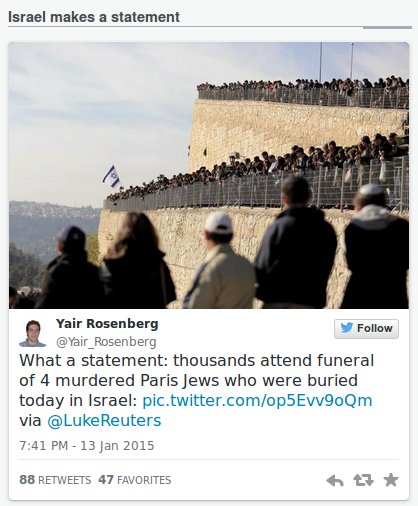 What a statement: thousands attend funeral of 4 murdered Paris Jews who were buried today in Israel: pic.twitter.com/op5Evv9oQm via @LukeReuters Yair Rosenberg @Yair_Rosenberg Thousands attend funeral in Jerusalem for victims of Paris supermarket attackJanuary 13, 2015 https://www.jta.org/2015/01/13/israel/thousands-attend-funeral-in-jerusalem-of-victims-of-paris-supermarket-
The victims “were murdered on the eve of the Sabbath, in a kosher supermarket in Paris, in cold blood, because they were Jewish,” Rivlin said, adding, “This is sheer hatred of Jews; abhorrent, dark and premeditated, which seeks to strike, wherever there is Jewish life.”
He called on the leaders of Europe to work to “commit to firm measures” to protect their communities’ Jews. The men were killed by Amedy Coulibaly, who took more than 20 people hostage at the market. Coulibaly was killed when police stormed the shop. He reportedly told the hostages during the standoff: “I will die today, but you before. You are Jewish, and today you are going to die.”
Some attending the funeral held signs in French reading “Je suis Juif” and “Je suis Israelien” — “I am Jewish” and “I am Israeli” — above photos of the victims.
The family members recited together the Mourner’s Kaddish after being assisted in tearing their clothes in the traditional Jewish sign of mourning. They then lit memorial torches for their loved ones.
“I have been saying for many years and I say it again today: These are not only enemies of the Jewish people, they are enemies of all mankind,” Israeli Prime Minister Benjamin Netanyahu said of the terrorists. “It is time for all people of culture to unite and uproot these enemies from our midst.”
Netanyahu issued a call, as he has several times since the attack, for Jews to make their homes in Israel. “Jews have a right to live in many countries and have full security, but I believe that they know in their heart, there is one country which is their historic home, a state which will always accept them with open arms. This is the hope of the entire Jewish people,” he said.
French government minister Segolene Royal told the mourners in her native language that “Anti-Semitism has no place in France. Each hit suffered by a Jew is a hit suffered by the French people.”
Following her address, Royal bestowed the Order of the Legion of Honor, the country’s highest civilian honor, on each victim, and then went to each family member to express individual condolences. |
|
From Rav Lazer Brody:A Nazi by Any Other Name…27April2014 http://lazerbrody.typepad.com/lazer_beams/2014/04/a-nazi-by-any-other-name.htmlIn “Romeo and Juliet” by Shakespeare, Juliet says: “What’s in a name? That which we call a rose by any other name would smell as sweet.”Tonight and tomorrow is Holocaust Remembrance Day. If it were up to me, I’d remove the “remembrance” part and simply call it “Holocaust Day”. Why? The Holocaust still lurks all around the world. It’s ugly and deadly seeds are germinating and sprouting in the fertile growth medium of growing antisemitism.To paraphrase Juliet, “What’s in a name? that which we call a Nazi by any other name would smell as foul.”Here’s what I mean: Today’s USA: The Ku Klux Klan, Skinheads and Neo Nazis Today’s Ukraine: Svoboda Today’s Italy: Casa Pound Today’s France: Front Nationale Today’s Greece: Golden Dawn Today’s Hungary: Jobbik Party Every other country in Europe has growist Fascist and neo-Nazi movement, some already violent, like the one in Poland. Now, let’s add the growing global Jihadi groups, many hiding behind the back of so-called “moderate Islam”, in Scandinavia, the UK, Germany, France and the USA. How many times have the Iranians, Hizbulla, Hamaz and Islamic Jihad declared their intent to destroy Israel? Don’t be foolish enough to think that they’re only talking about Zionists; that’s merely a polite term for Jew. An Al-Qaida bomb in New York City or a Hizbulla booby trap in Buenos Aires is not intended for Zionists – the target is Jews. There’s a concept in the Jewish Laws of Purity: Immersion in the mikva doesn’t help someone who is holding a dead mouse in his or her hand. Why cry about Holocaust Day while perpetuating the Diaspora and being the victim of another potential Holocaust? Why aren’t people reading the global anti-Semitic writing on the wall? Can’t they realize that Hashem is telling everyone that it’s time to come home? Do you really want to do something about the Holocaust? Do you really want to prevent another Holocaust, G-d forbid? Rabbi Yehoshua Fass of Nefesh B’Nefesh is a dear friend of mine. Write him an email right now (tell him that Lazer sent you) and tell him that you’re interested in getting the ball of your aliya rolling. He’ll tell you what to do. The greatest memorial for the 6,000,000 Jews who died in the Holocaust is a strong, truly Jewish homeland. Cherished brothers and sisters, help us build it. Come home now; we’re waiting for you with open arms. Comment:
It’s time to come home! Nefesh B’Nefesh: Live the Dream 1-866-4-ALIYAHCome Back – Nefesh B’NefeshLiving The Dream – Nefesh B’NefeshIt’s time to come home! Nefesh B’Nefesh: Live the Dream 1-866-4-ALIYAH UK 0800-085-2105 Come home to the Land of Emuna Nefesh B’Nefesh: Live the Dream US & CAN 1-866-4-ALIYAH | UK 020-8150-6690 or 0800-085-2105 | Israel 02-659-5800 https://www.nbn.org.il/ info@nbn.org.il Nefesh B’Nefesh: Live the Dream US&CAN 1-866-4-ALIYAH UK 0800 075 7200 Israel 02-659-5800 www. nbn.org.il The home page of Yad VashemYom HaZikaron laShoah ve-laG’vurah (יום הזיכרון לשואה ולגבורה; “Holocaust and Heroism Remembrance Day”), known colloquially in Israel and abroad as Yom HaShoah (יום השואה) and in English as Holocaust Remembrance Day, or Holocaust Day, is observed as Israel’s day of commemoration for the approximately six million Jews who perished in the Holocaust as a result of the actions carried out by Nazi Germany and its accessories, and for the Jewish resistance in that period. In Israel, it is a national memorial day.On Yom HaShoah, ceremonies and services are held at schools, military bases and by other public and community organizations.On the eve of Yom HaShoah and the day itself, places of public entertainment are closed by law. Israeli television airs Holocaust documentaries and Holocaust-related talk shows, and low-key songs are played on the radio. Flags on public buildings are flown at half mast. At 10:00 a.m., an air raid siren sounds throughout the country and Israelis observe one minute of solemn reflection. People stop what they are doing and motorists stop their cars in the middle of the road, standing beside their vehicles in silence as the siren is sounded.
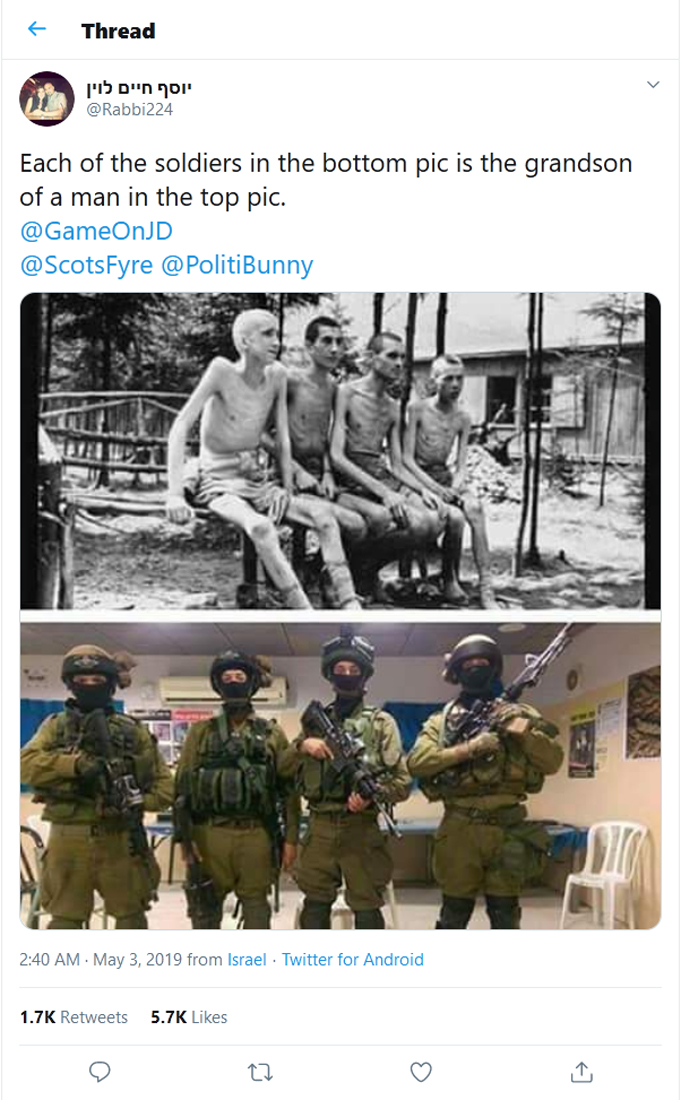 יוסף חיים לוין @Rabbi224 Tweet-03May2019 Each of the soldiers in the bottom pic is the grandson of a man in the top pic. @GameOnJD @ScotsFyre @PolitiBunny
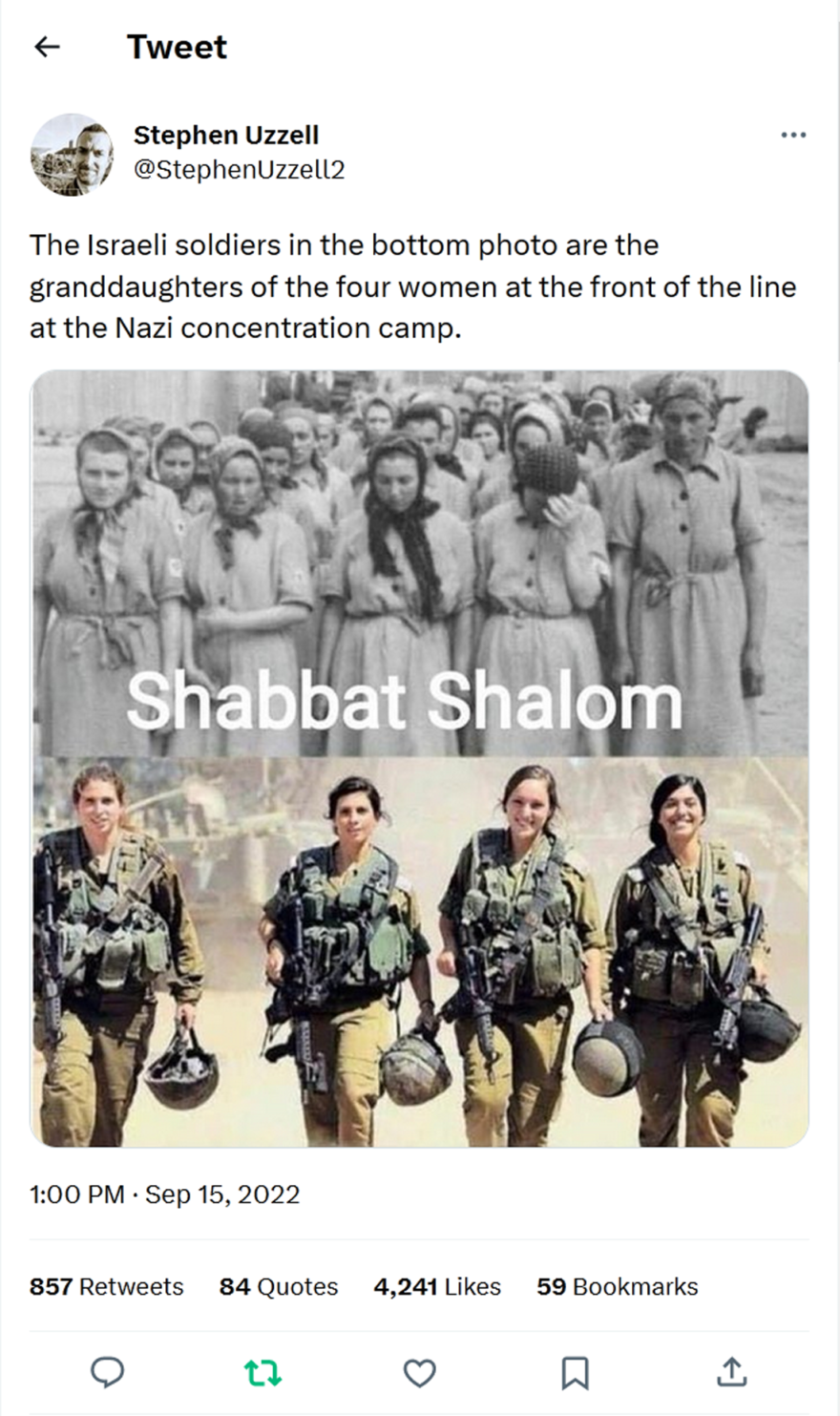 Stephen Uzzell-tweet-15September2022-The Israeli soldiers in the bottom photo are the granddaughters of the four women at the front of the line at the Nazi concentration camp.
 Nefesh B’Nefesh: Live the Dream US & CAN 1-866-4-ALIYAH | UK 020-8150-6690 or 0800-085-2105 | Israel 02-659-5800 https://www.nbn.org.il/ info@nbn.org.il Nefesh B’Nefesh: Live the Dream US&CAN 1-866-4-ALIYAH UK 0800 075 7200 Israel 02-659-5800 www. nbn.org.il
Ani Maamin – Mordechai Shapiro |
|
|
|
JerusalemCats Comments: in 1987 at Yad Vashem on the wall on the entrance they had a furious British Lion guarding the Closed gates of Eretz Yisrael. No one could Enter! |
|
JerusalemCats Comments: Remember what Israel did on July 4th, 1976, The Entebbe Raid. 102 hostages were rescued! If Israel could do that after the 1973 Yom Kippur War what could it have done in 1939? Just imagine if Menachem Begin was Prime Minister of Israel in 1938.IDF-tweet-4July2016-Entebbe-RescueHow many could have been saved if Israel was reborn in 1938 instead of 1948? (posters)April 24, 2023 https://elderofziyon.blogspot.com/2023/04/how-many-could-have-been-saved-if.html There are always discussions on how to teach the Holocaust in a way that young people can internalize the horror of what happened. These discussions become more prominent around Yom Hashoah.
At the same time, with the upcoming Yom Ha’atzmaut, Israel haters try to frame Israel as pure evil whose existence is itself a human rights crime and which reduces the security of Jews, not enhances.it.
Last week, pseudo rabbi Brant Rosen said this on Al Jazeera: [EDD: Al Jazeera is a known Antisemetic website, Video is antisemitic.]I responded with a tweet that received hundreds of Likes:
On Sunday night, I decided to combine these two themes. I took actual photos of victims of the Holocaust, but I specifically chose photos that non-Jews could identify with. Except for the first, which as taken in the Birkenau camp before that family was murdered, I chose photos without the yellow star, without the emaciated victims. And I colorized them so they would look recent and not like they came from a long ago era.
I then wrote fairly angry posters noting that no one tried to save these Jews from being murdered – but if Israel existed, things might have been different.
I admit, this exercise really affected me as I was doing it. I was too emotionally drained after four posters to continue.
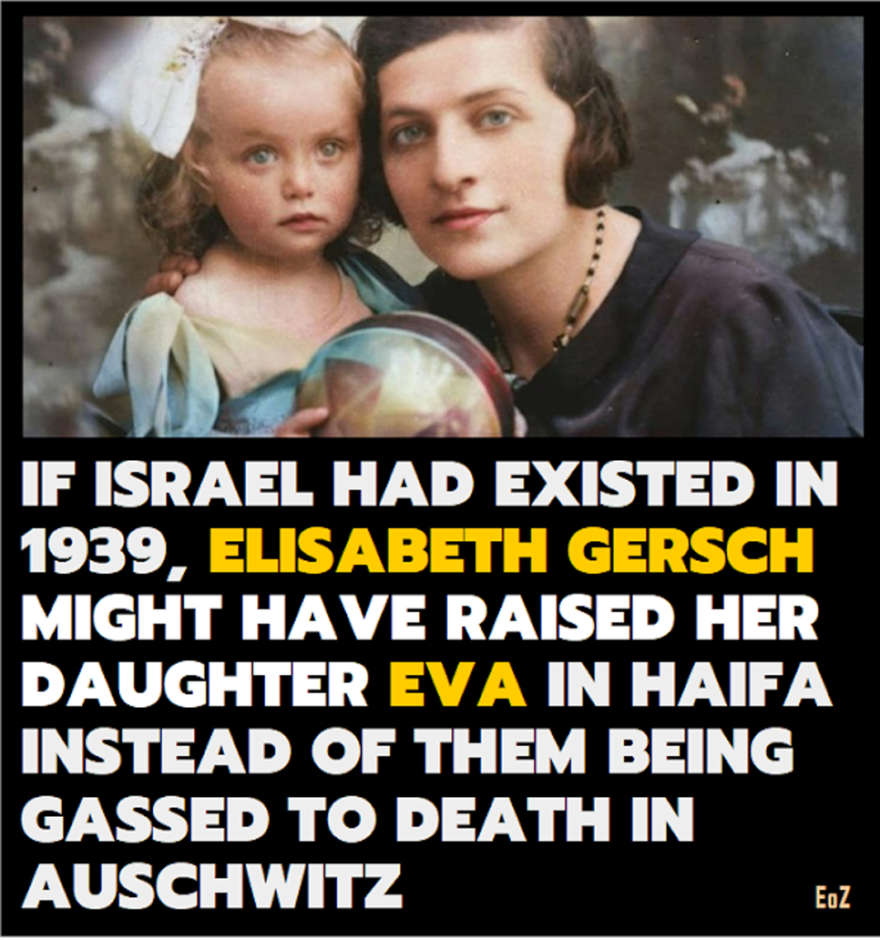 If Israel had existed in 1939, Elisabeth Gersch Might Have raised Her Daughter Eve in Haifa instead of Them Being Gassed To Death in Auschwitz
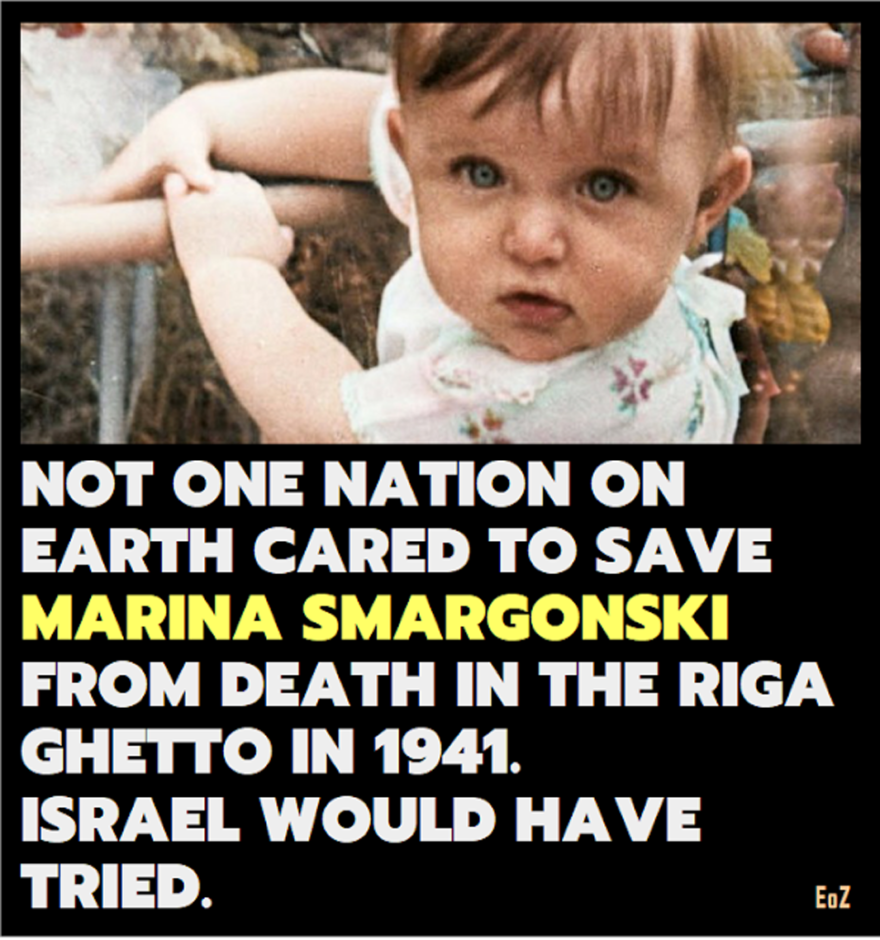 Not ONE NATION OF EARTH CARED to Save Marina Smargonski from Death in the Riga Ghetto in 1941. Israel Would Have tried.
I don’t know if others would be as impacted, but perhaps this is a direction that might be useful for teaching both about the Holocaust and the importance of Israel. It won’t help for the many real Jew-haters out there (there are plenty of people on Twitter responding that Israel’s crimes are worse than Nazi Germany’s) but there will always be Jew-haters – the point is to reach normal people. |
|

British complicity in the German Holocaust
By Mordechai Ben-Menachem 9 Av 5783 (7 July 2023) https://www.israpundit.org/british-complicity-in-the-german-holocaust/ https://www.israpundit.org/british-complicity-in-the-german-holocaust/ For Britain, the German Holocaust that would begin in 1933 actually began much earlier. The precise date is open for debate. Britain’s role in the Holocaust was active and intense, before Germany and ended afterwards, though less “productive” numerically. Britain was “the backstop” to Germany’s team. Germany was the perpetrator. But Britain was prime enabler, while no slouch in their own mass killing machine. The story and facts are still not well-known. The objective of this short article is awareness of the basic facts, so that interested people can find the entire story for themselves. This is about British murders of Jews during the Mandate, and what led to them – depending upon source, the quantity may be as many as 35,000. It is not possible to comprehend “what they did to us” without comprehending “what they did.” English actions toward Jews did not occur in a vacuum. The Monster QueenVictoria was crowned 24 May 1819 and reigned until 22 January 1901, [EDD: Victoria (Alexandrina Victoria; 24 May 1819 – 22 January 1901) was Queen of the United Kingdom of Great Britain and Ireland from 20 June 1837 until her death in 1901. … From Wikipedia, the free encyclopedia https://en.wikipedia.org/wiki/Queen_Victoria] when the world was finally shut of this “paragon of virtue.” Massive deaths occurred during her reign; one of the bloodiest in human history. “At a time when Ireland was enduring the terrible loss of a million dead and the mass exodus of a million more during the Great Hunger, the story goes that the Ottoman Sultan, Khaleefah Abdul-Majid I, declared his intention to send £10,000 to aid Ireland’s farmers. However, Queen Victoria intervened and requested that the Sultan send only £1,000 because she had sent only £2,000 herself. So the Sultan sent only the £1,000, but he also secretly sent five ships full of food. The English courts attempted to block the ships, but the food arrived in Drogheda harbor and was left there by Ottoman sailors.”[1] In a truly amazing feat of “Christian brotherly love” not one European country came to the aid of the Irish, neither Catholic (as the Irish) nor Christian; the Vatican did not even ease the burden of the tithe. “The London Times urged readers not to donate at all, pronouncing that sending funds to Ireland was akin to throwing money away in an ‘Irish bog’”.[2] “Lionel de Rothschild created an organisation for Irish relief which succeeded in donations of some about £600,000. … In the 1840s, in Ireland’s hour of greatest need, Jews in Britain, the United States and elsewhere heeded that call, donating money and working to alleviate some of the suffering of the Irish Potato Famine.”[3] Jews saved perhaps millions of Irish, in recompense, Ireland is now Europe’s most antisemitic country – they learned well from their masters. The MandateThe Mandate for Palestine was a written and signed contract, ratified as International Law by the San Remo Conference and subsequently by the League of Nations and United Nations. Withal, at NO point did any British government uphold even one article of that agreement that they had solemnly sworn to uphold. Lloyd George, in his memoirs stated clearly that it had always been his and his Government’s “intension” to abide by the agreement. Even Winston Churchill, at no point in his years as Prime Minister did the Churchill Government uphold even one Article of the agreed contract. Balfour Declaration in truth and contextBalfour Declaration importance results from its recognition of the historical rights of the Jewish People to a National Home, in their Homeland, by a world government – as opposed to that of the Blackstone Memorial, which was by individuals. A “world government” but not yet by general world governments; the broader recognition arrives slightly later, at San Remo. The declaration dates from 2 November 1917, and was initiated by Minister of Foreign Affairs, Balfour, as a letter to Dr. Haim Weizmann, head of the World Zionist Organisation, which was the recognized representative of the Jewish People. The Declaration was NOT a unilateral act of Britain. On 4 June 1917, French Minister of Foreign Affairs, Jules Cambon, wrote that the French government “felt sympathy” for the cause, as “renaissance of the Jewish nationality in that Land from which the people of Israel were exiled so many centuries ago.” British diplomacy also secured support of US President Wilson. There was also Ottoman Government agreement encouraging establishment of a Jewish Homeland; with historical precedent from sixteenth century actions of Suleiman. On 12 August 1918, Grand Vizier Talaat Pasha, issued: “… We have resolved to do away with all restrictive measures and definitely to abolish the restrictive regulations regarding the immigration and settlement of Jews in Palestine. I assure you of my sympathy for the creation of a Jewish religious center in Palestine by means of well-organized immigration and colonization. It is my desire to place this work under the protection of the Turkish government.”[4] Add to this the letter of strong support from Assad (grandfather to the Butcher of Damascus). Britain assumed this was simply an alternate method to acquire an additional colony to join its ‘collection’ and never intended to keep any of its agreements, and in fact did not. Chronology of signed agreements:(1) In British-Ottoman negotiations of 1911-1913, Britain upheld sovereignty and territorial integrity of the Ottoman Empire (except where breached prior to this agreement). Britain broke this agreement with the Constantinople Agreement and its subsequent agreements. In 1917, the war was going badly. Russia had left the field after the first revolution, while France was bogged down in trenches with no way out. (6) On 26 December 1915, Britain concluded an agreement with Abd al Aziz ibn al Rahman al Feisal al Saud (better known as ibn Saud – progenitor of the present Saud dynasty in Saudi Arabia). This was the first (of many) breaks with the agreement with the Ottoman Empire. With this, Britain paid ibn Saud some five thousand British Pounds Sterling per month. (7) There followed one of the most controversial acts of Britain in the War. “Perhaps no other British commitment in the Middle East in World War I attracted greater and more conflicting attention in the three decades following the war that the Husayn-McMahon correspondence. (14 July 1915 to 10 March 1916)”[7] Note that only in 1960 was the actual content released to public record. The correspondents were Henry McMahon, British High Commissioner for Egypt and Husayn ibn Ali Al Abadila, the Sharif of Mecca, the holiest spot for all Muslims. Britain’s objective was for the Sharif to initiate and lead a revolt against Ottoman rule in the Arabian Peninsula; despite the previous agreement with the Ottomans. The most historically significant aspect of this agreement was the great British effort, with centuries of diplomatic experience, for vague and ambiguous wording. This perfidy plagues the Middle East until the present – indeed, British misconduct is the primary source of the conflict between State of Israel and the Arabs. (8) The Tripartite Sykes-Picot Agreement on the Partition of the Ottoman Empire: Britain, France and Russia – 26 April 1916 to 23 October 1916. This agreement caused formation of Lebanon, Syria and Iraq as Arab “States” while disregarding the Kurds. The Golan Heights were ceded to the French on 7 March 1923, under terms of the Paulet-Newcombe Agreement; a subsidiary to Sykes-Picot; thus the international disagreement over the Golan Heights, as neither Sykes-Picot nor Paulet-Newcombe had validity; nor were they in any way reasonable to the populations of the areas under discussion. [8] “Into Mesopotamia – a vague geographical concept that at its largest embraced the Ottoman vilayets of Basrah, Baghdad, and Mosul – British-Indian forces moved only slowly, when they moved at all. Following the seizure of the city of Basrah as early as 22 November 1914, more than two years elapsed before British-Indian units took Baghdad (11 March 1917) … The Palestine campaign reopened with a flourish in the fall of 1917, after long and hesitant preparation and initial reverses in 1916, only to stall after the Egyptian Expeditionary Force captured Jerusalem in December 1917.”[9] (9) The British Balfour Declaration of Sympathy with Zionist Aspirations – 4 June 1917 to 2 November. [In interest of brevity, the full text of the Declaration is not included here. Also, the NILI story, though integral, is also omitted. Full texts can be found in my books – MBM.] Lloyd George, in his autobiography, asserted that Britain, at issuance, had “no intention” of not keeping the Declaration; “of aborting the possibility of an ultimate Jewish commonwealth in Palestine”. Full text of the Balfour Declaration was incorporated as an integral part of both the San Remo Resolution and the British Mandate for Palestine from the League of Nations; Transforming the Declaration from a “letter of intent” to a legally-binding and foundational document under international law. Note: NO Arab nation, organisation or entity opposed the San Remo Resolution. Britain never had any intention of keeping their sworn word. “It has been urged that the expression ‘a national home for the Jewish people’ offered a prospect that Palestine might in due course become a Jewish State or Commonwealth. His Majesty’s Government do not wish to contest the view, which was expressed by the Royal Commission, that the Zionist leaders at the time of the Balfour Declaration recognised that an ultimate Jewish State was not precluded by the terms of the Declaration. But, with the Royal Commission, His Majesty’s Government believe that the framers of the Mandate in which the Balfour Declaration was embodied could not have intended that Palestine should be converted into a Jewish State against the will of the Arab population of the country.”[10] The League of Nations agreed the British refused to abide by their sworn word. “In June (1939) the Permanent Mandates Commission of the League of Nations unanimously concluded ‘that the policy set out in the White Paper was not in accordance with the interpretation which, in agreement with the mandatory Power and the Council, the Commission had placed upon the Palestine mandate’ (Minutes of the Thirty-sixth Session, p. 275).”[11] This statement of “Mandatory Policy” before Parliament went unchallenged despite the explicit statement to the contrary in the Mandate Document: “Article 2: The Mandatory shall be responsible for placing the country under such political, administrative and economic conditions as will secure the establishment of the Jewish national home, as laid down in the preamble, and the development of self-governing institutions, and also for safe-guarding the civil and religious rights of all the inhabitants of Palestine, irrespective of race and religion.”[12] This is ultimately very important, because interdiction British policy and mass murder was never given Parliament approval, was never passed as law. All tens of thousands of Jews killed were killed extra-judicially and illegally. Balfour himself later declared that there had been NO intention to form a Jewish State and that the Declaration was perfidy. NumbersFollowing is a brief display of quantities of Jews Murdered by Britain during the Mandate: this is NOT complete, new discoveries still occur. Warship Ramming of an unarmed civilian ship on the High Seas (not territorial waters) because the Capitan “suspects” they may in the future commit a crime not Parliamentary proscribed is a crime. More than 1,700 Jews were murdered by the British Navy by ramming, alone.
Note that British warship interdictions continued through 1951. [1] IrishCentral Staff; “Little known tale of generous Turkish aid to the Irish during the Great Hunger”; 6 July 2019; Irish Central; downloaded 24 September 2019; https://www.irishcentral.com/roots/history/generous-turkish-aid-irish-great-hunger [2] Miller, Dr. Yvette Alt; “Jews and the Irish Potato Famine”; AISH.COM; 14 Mar 2018; downloaded 24 September 2019; https://www.aish.com/jw/s/Jews-and-the-Irish-Potato-Famine.html [3] ibid [4] Gold, Dore Amb.; “The Historical Significance of the Balfour Declaration”; 31 October 2017; Jerusalem Center for Public Affairs; downloaded 6 November 2017; http://jcpa.org/article/historical-significance-balfour-declaration/?utm_source=phplist3568&utm_medium=email&utm_content=HTML&utm_campaign=ISRAPUNDIT+DAILY+DIGEST++NOV+02%2F17 [5] Hurewitz, J. C. compiler, translator and editor; “The Middle East and North Africa in World Politics – a Documentary Record”; second edition, revised and enlarged; volume 2 British-French Supremacy, 1914-1945; New Haven and London; Yale University Press; 1979; pp. 16-17 [6] Sachar, Howard Morley; “The Course of Modern Jewish History”; a Delta Book; 1977; pp. 374 [7] Hurewitz, J. C. compiler, translator and editor; “The Middle East and North Africa in World Politics – a Documentary Record”; second edition, revised and enlarged; volume 2 British-French Supremacy, 1914-1945; New Haven and London; Yale University Press; 1979; pp. 46 [8] Paulet-Newcombe Agreement; https://ecf.org.il/issues/issue/246 [9] Hurewitz, J. C. compiler, translator and editor; “The Middle East and North Africa in World Politics – a Documentary Record”; second edition, revised and enlarged; volume 2 British-French Supremacy, 1914-1945; New Haven and London; Yale University Press; 1979; pp. 118-119 [10] Hurewitz, J. C. compiler, translator and editor; “The Middle East and North Africa in World Politics – a Documentary Record”; second edition, revised and enlarged; volume 2 British-French Supremacy, 1914-1945; New Haven and London; Yale University Press; 1979; pp. 533 [11] Ibid; pp. 531 [12] Ibid; pp. 306
Mordechai ben Menachem is a prolific author. The article is a precise of his 1,000 page book on European Antisemitism, “Now is History!”. If you want a copy of the book write to him at quality@acm.org |
|||||||||||||||||||||||||||||||||||||||||||||||||||||||||||||||||||||||||||||||||||||||||||||||||||||||||||||||||||||||||||||||||||||||||||||||||||||||||||||||||||||||||||||||||||||||||||||||||||||||||||||||||||||||||||||||||||||||||||||||||||||||||||||||||||||||||||||||||||||||||||||||||||||||||||||||||||


